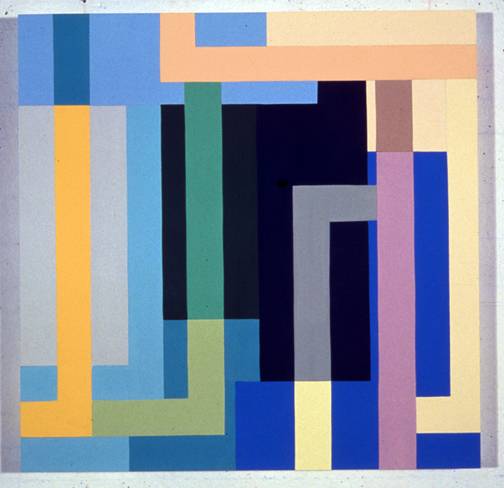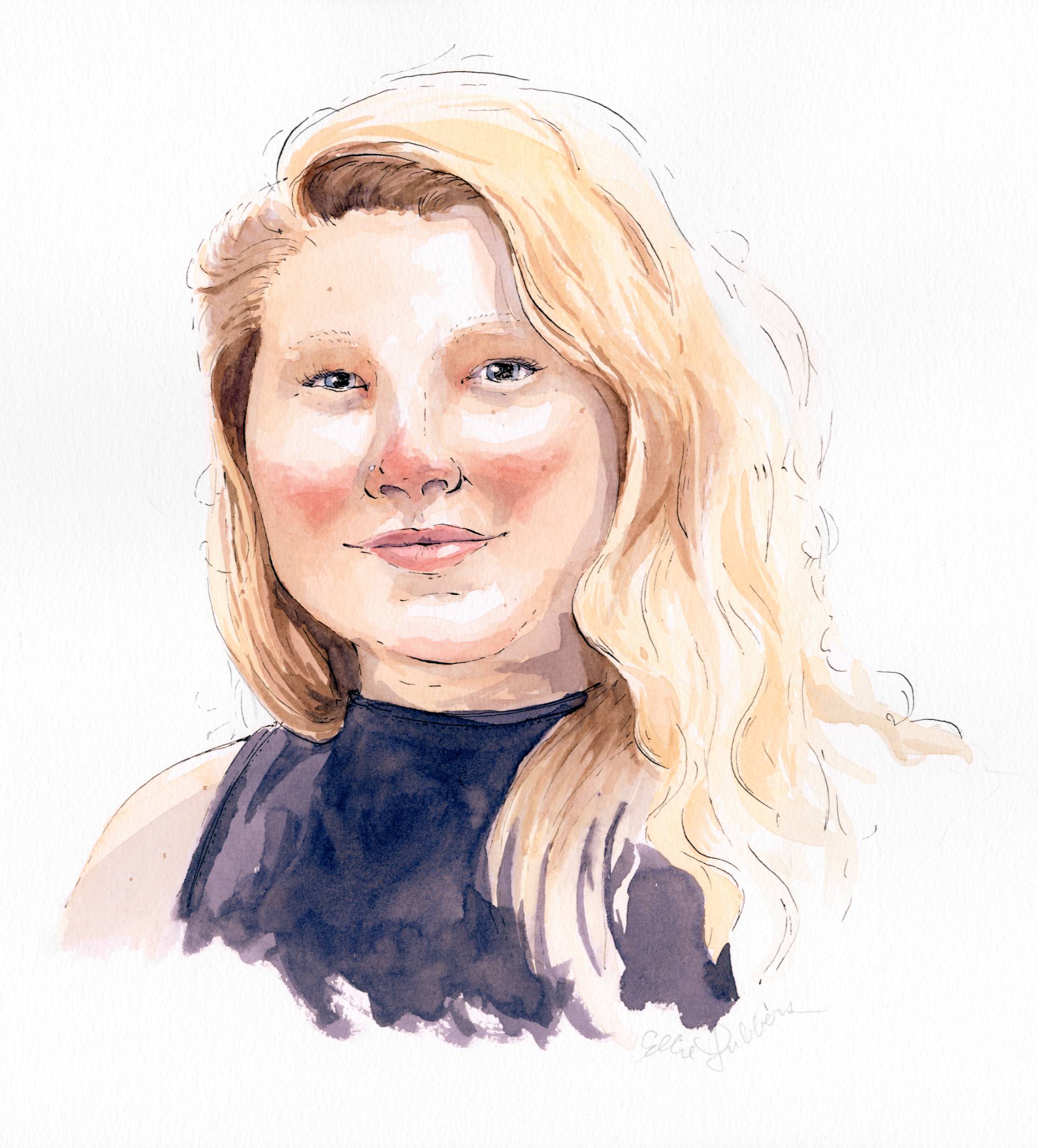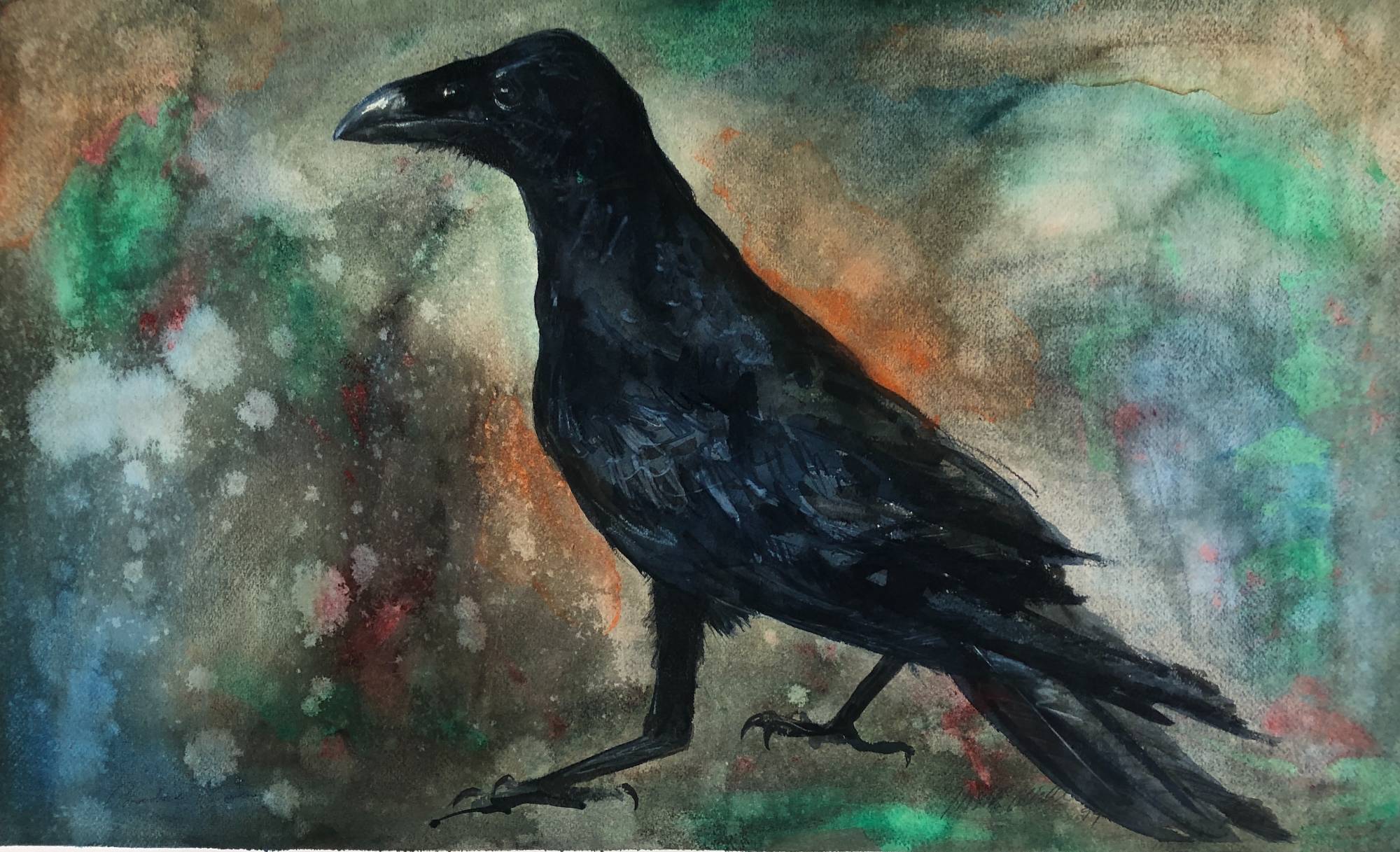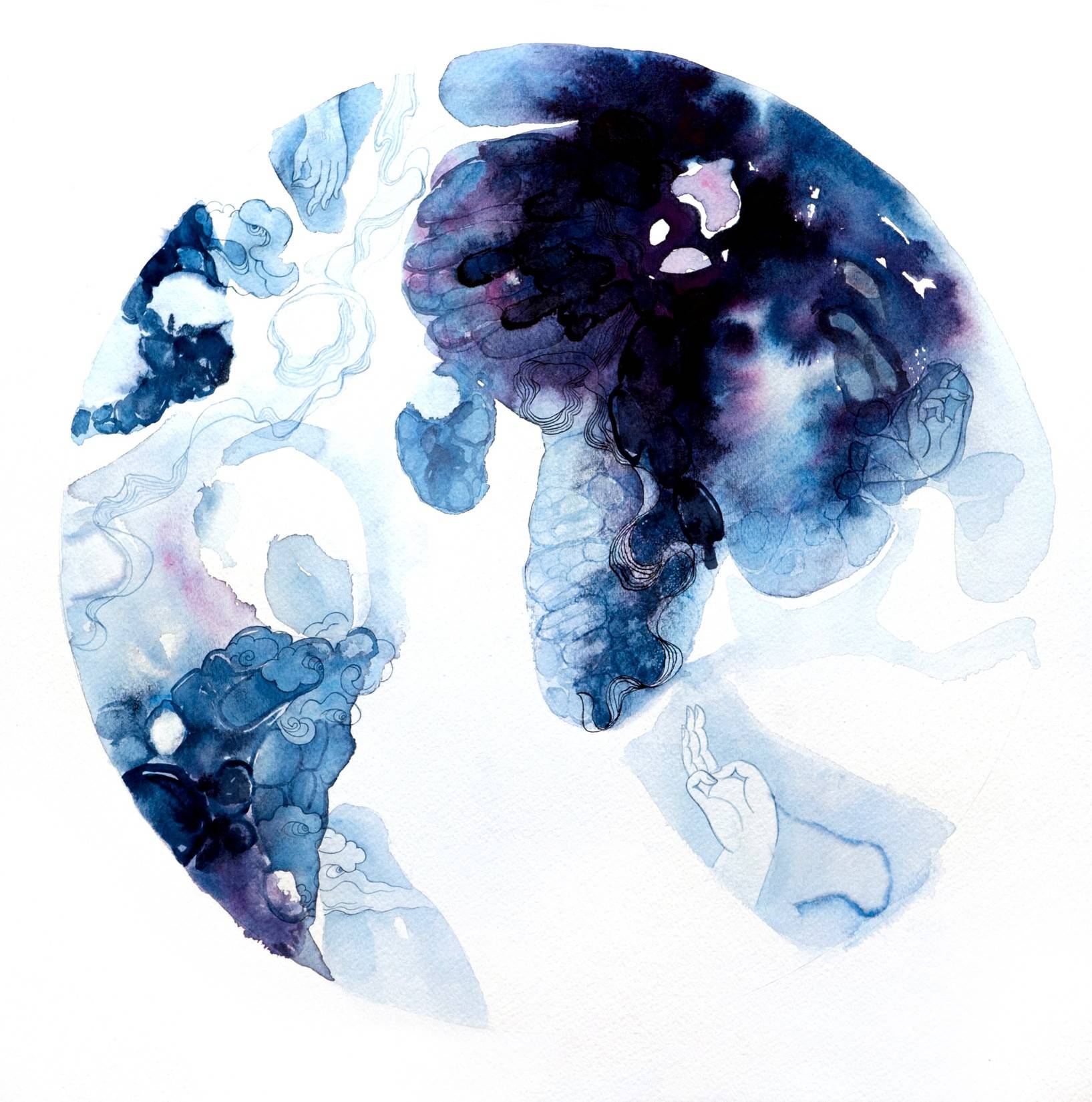Painting from the Collection
The origin of painting reaches back to images created by pre-historic artists and spans all cultures. Some of the earliest known painted images are from Paleolithic caves where mixtures of ochre, charcoal and other natural pigments were used to make illustrations. Across all cultures, continents, and peoples, the painting tools, techniques, and styles continue to evolve.
A painting is primarily made up of two things: paint, and a surface. Surfaces can range from cloth canvases to wooden boards, from walls to ceilings, and even found objects or paper. The type of medium selected to paint on often dictates the type of paint to use. Paint is any pigmented liquid or liquefiable compound that becomes a solid film on a surface once dried. The most common types of paint used in art making include oil, acrylic, and watercolor. Most paint starts with a pigment and a binder or solvent. Pigments are primatily finely ground organic or inorganic materials that help create the color of a paint. Binders and solvents are the liquid aspect of paint that determines how the paint will dry. Examples include oil, water, and egg yolk. Other additives and thinners can be added to change the texture and look of a paint.
Oil Painting
The artist likely used oils extracted from walnuts or poppies mixed with ground organic materials to create their painting. In Europe, oil painting as a medium is recorded as early as the 11th century with major advancements in canvases, types of paints, and easels inproving the oil painting process that emerged out of the Renaissance. Before oil paint, artists used tempera paint. Tempera paint was made by mixing pigments with egg yolk. This resulted in a mixture that dried fast but was hard to achieve fine details. The colors were often dull and faded.
Oil paint is created by combining ground pigments with an oil, most commonly linseed oil. Oil paints offered the artist more flexibility and depth and range of color. They can be applied different ways and are slow to dry so the artist can continue to work with them for much longer than other paint forms. Early oil paint had to be mixed by hand daily, making them difficult to travel with or store. In 1841, American artist John G. Rand introduced the first paint tube which made oil painting an even easier and more popular form of painting.
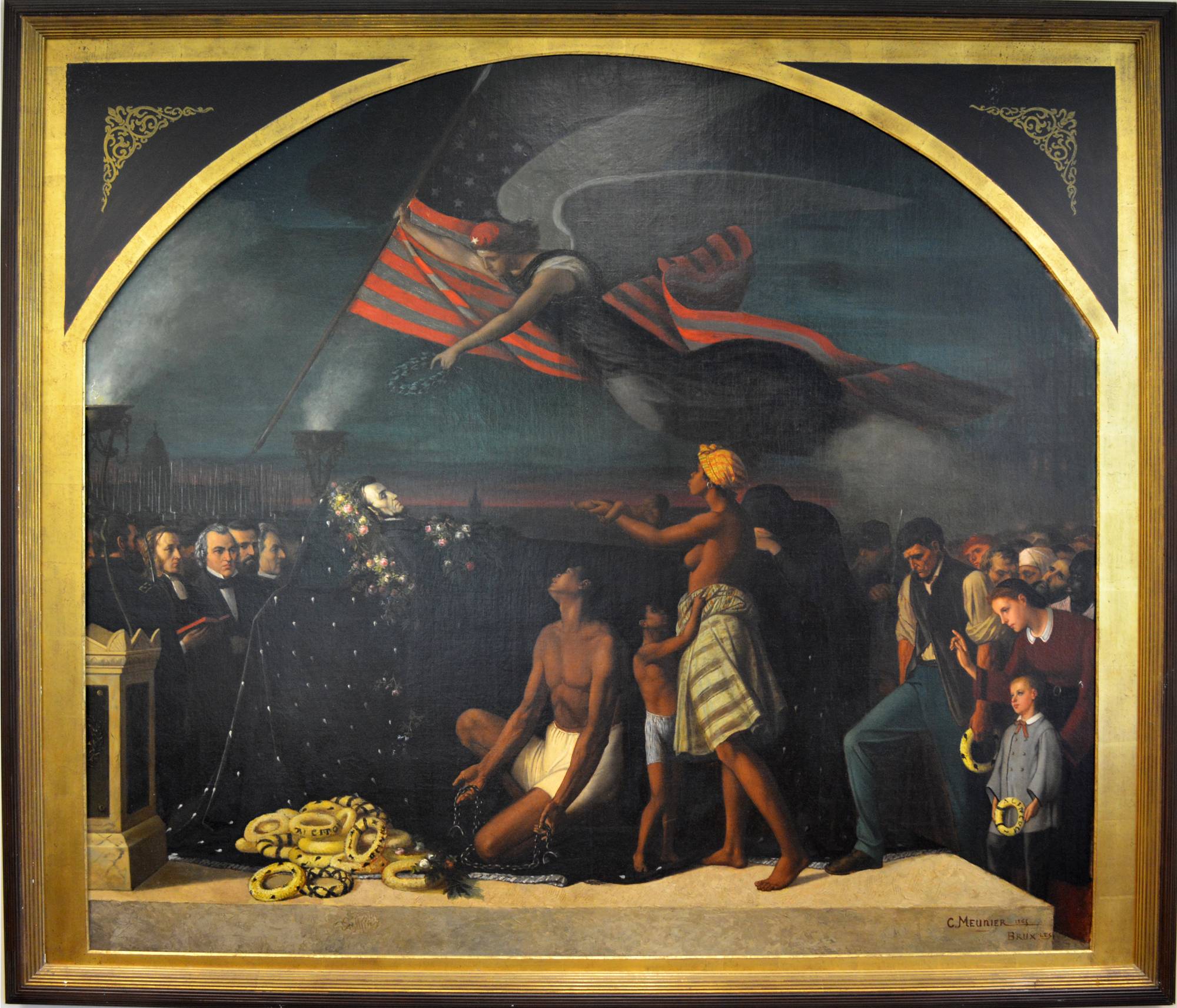
Constantin Meunier, Allegory of the Death of Lincoln, oil on canvas, 1865. 2002.430.1
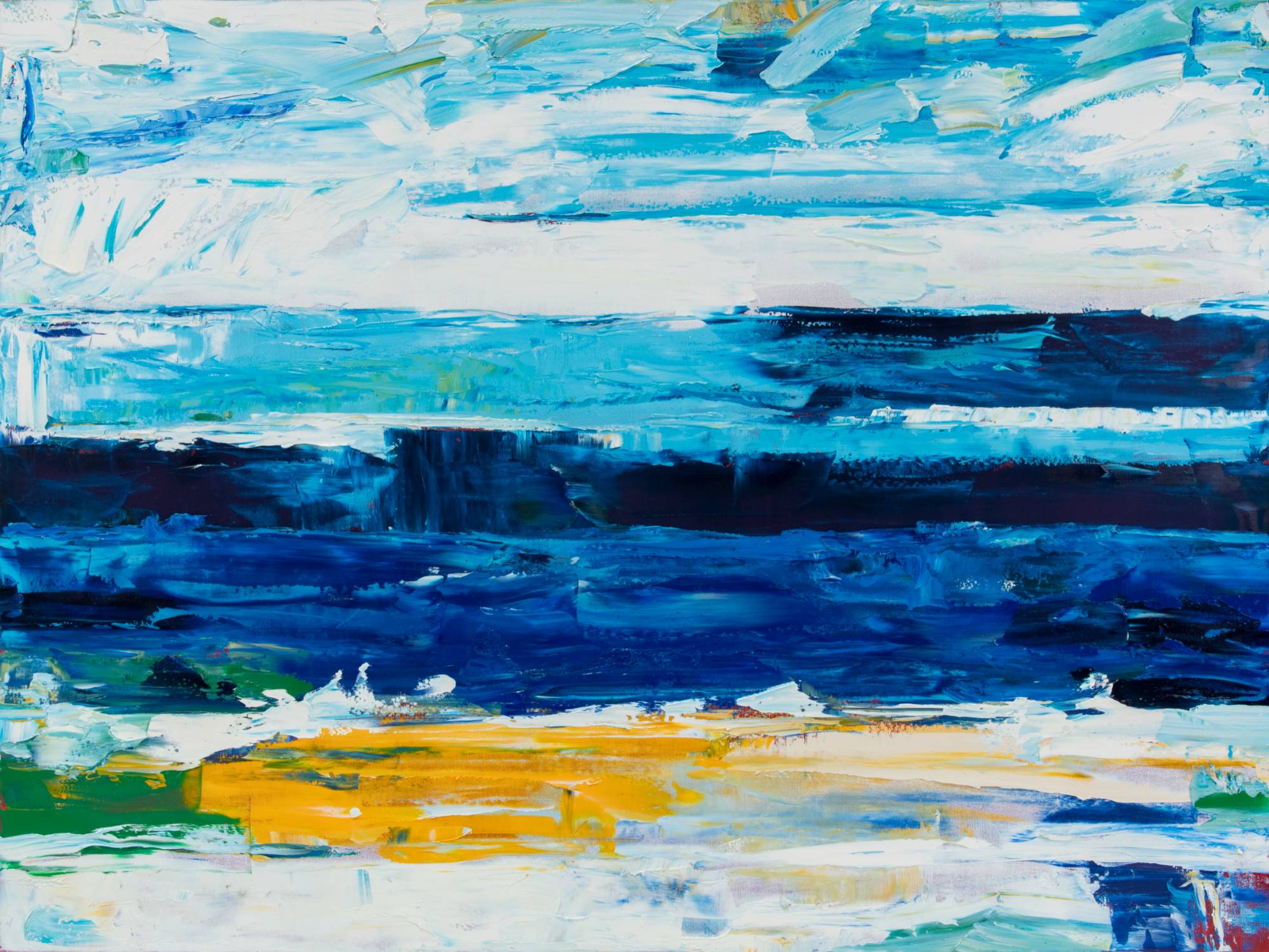
Sheryl Budnik, Next to the Sea, oil on canvas, 2018. 2021.24.1
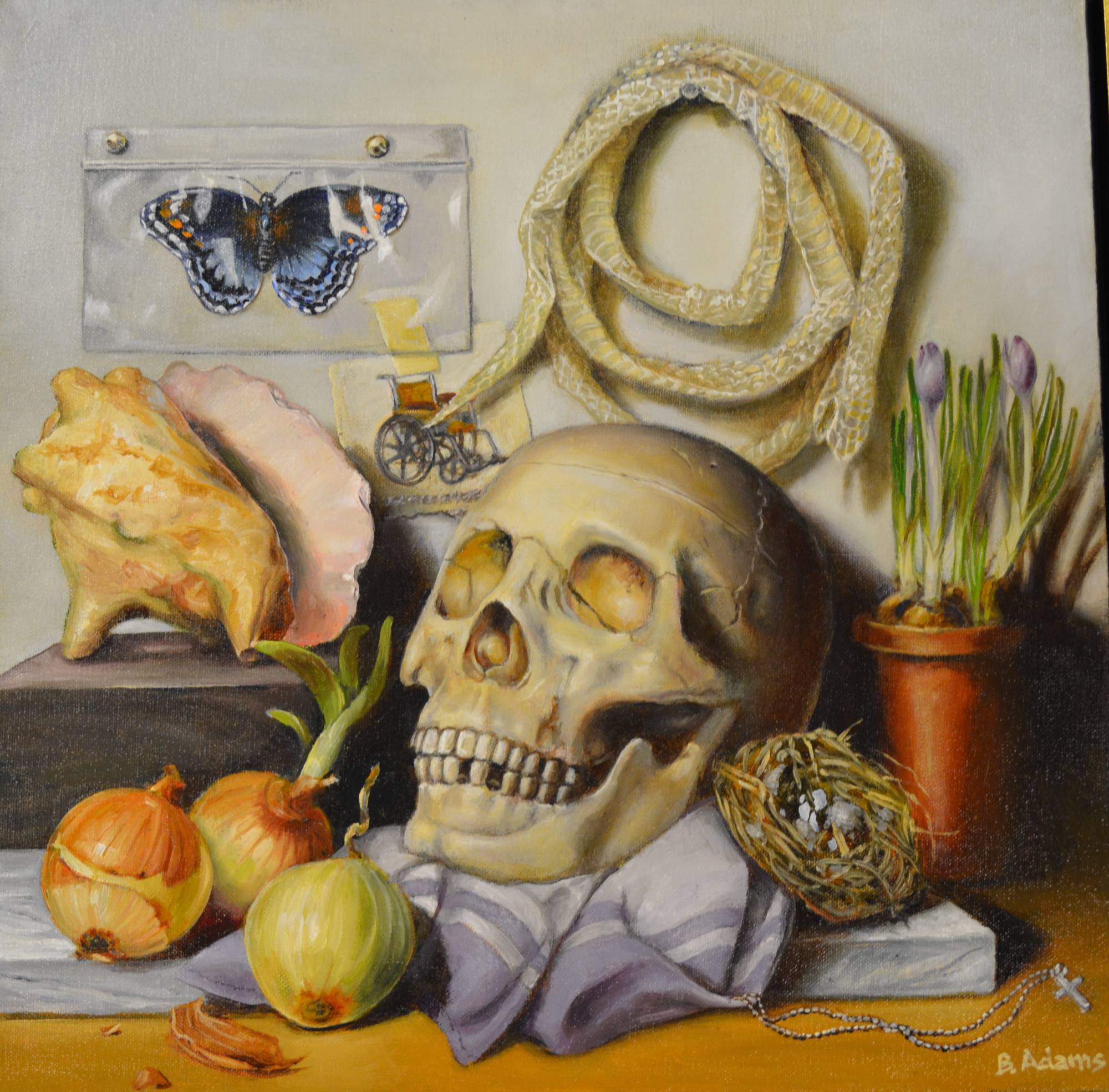
Beverly Adams, Oh That We Could Shed Out Skin and Begin Again, oil on linen, 2017. 2018.10.1
Stephen Duren
Michigan artist Stephen Duren attended the San Francisco Art Institute in the 1970s but skipped many of his studio classes in favor of working outside, directly from nature, or in 'plein-air'. During these periods of plein-air painting he observed countless textures and patterns from the landscape. This visual vocabulary became the foundation for his painting, as his personal style moved from realism to abstraction.
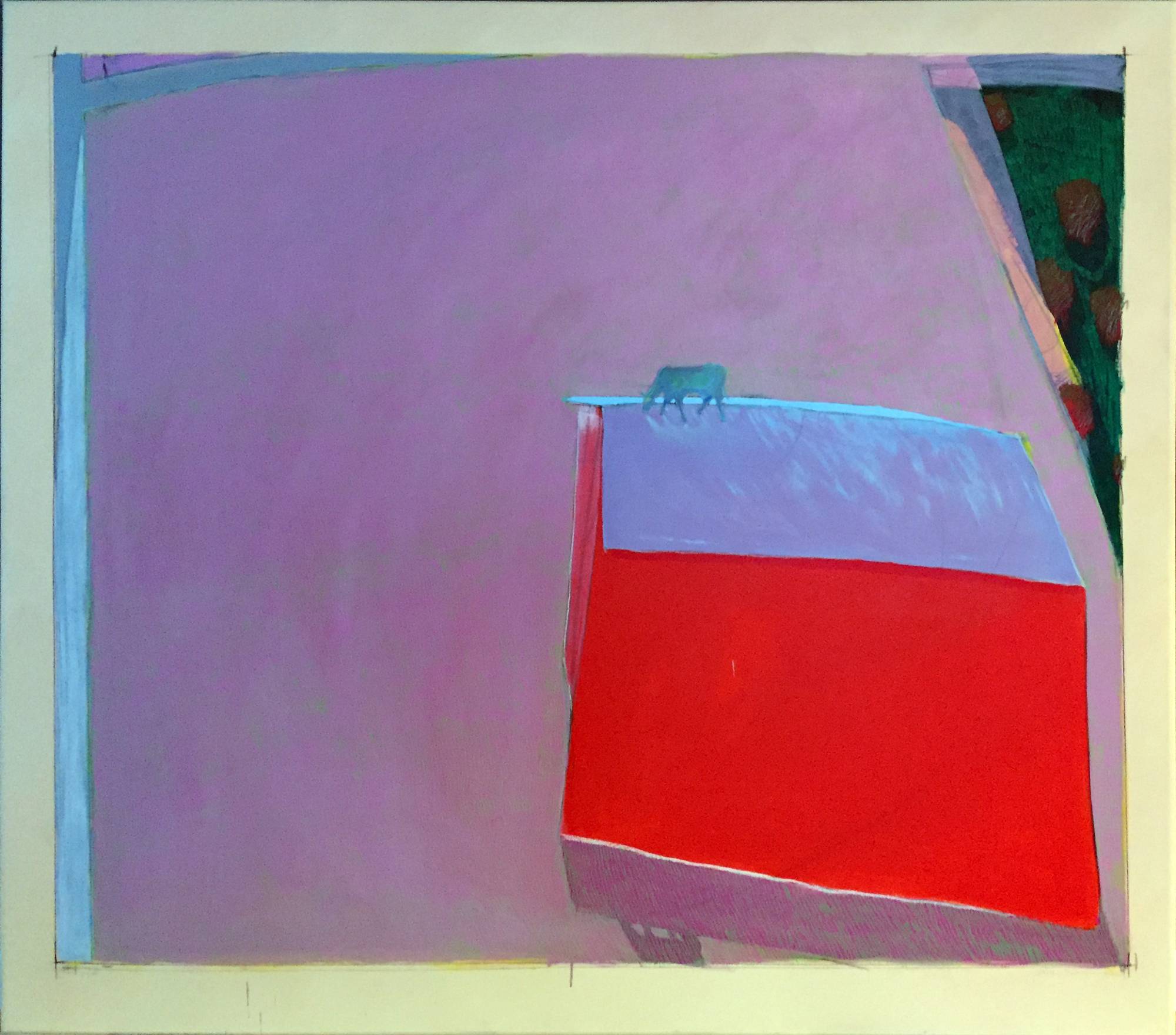
Stephen Duren, Cow on Barn, oil on canvas, circa 2005. 2017.16.1
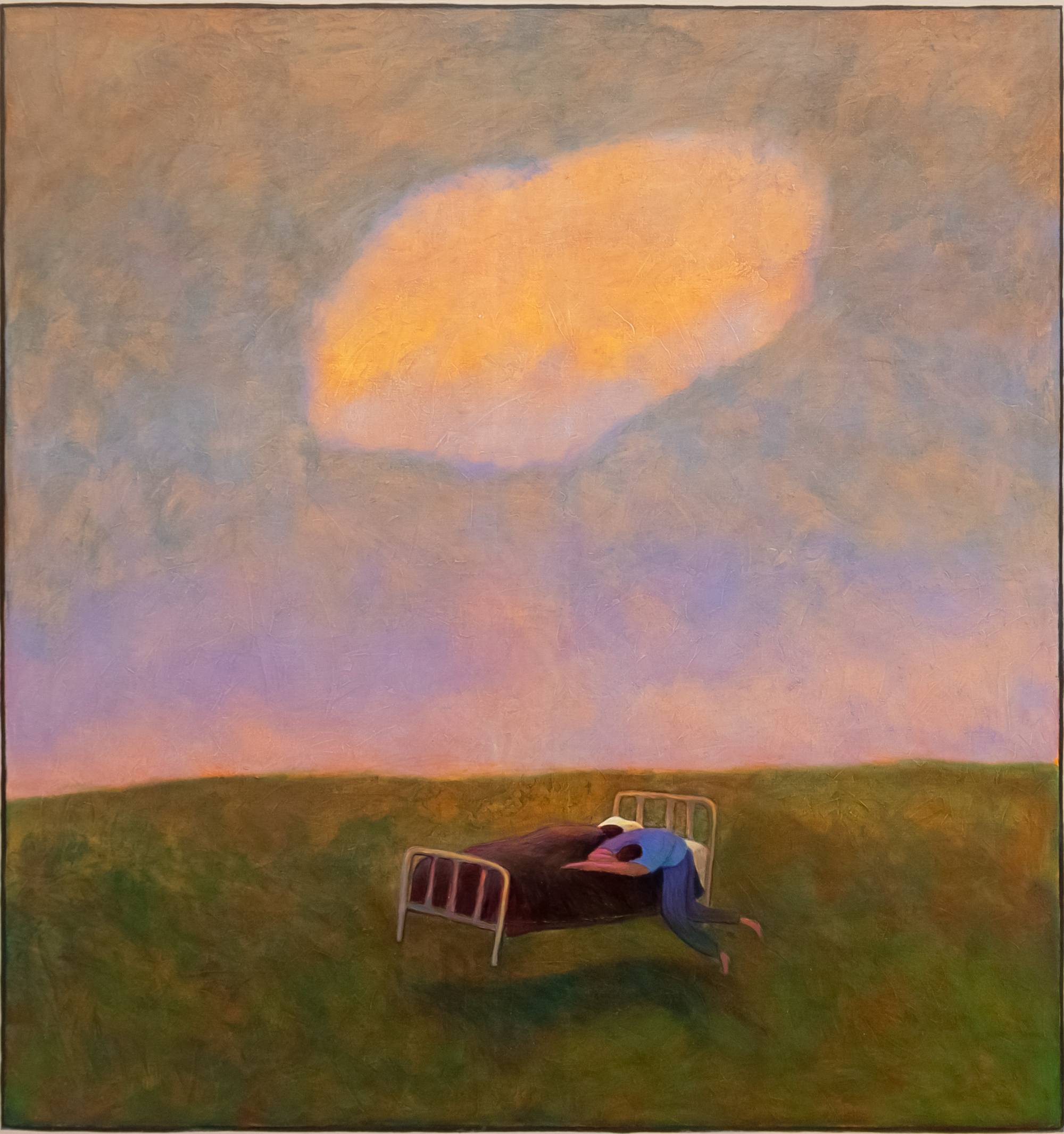
Stephen Duren, Floating Bed, oil on canvas, 1988. 1999.783.1
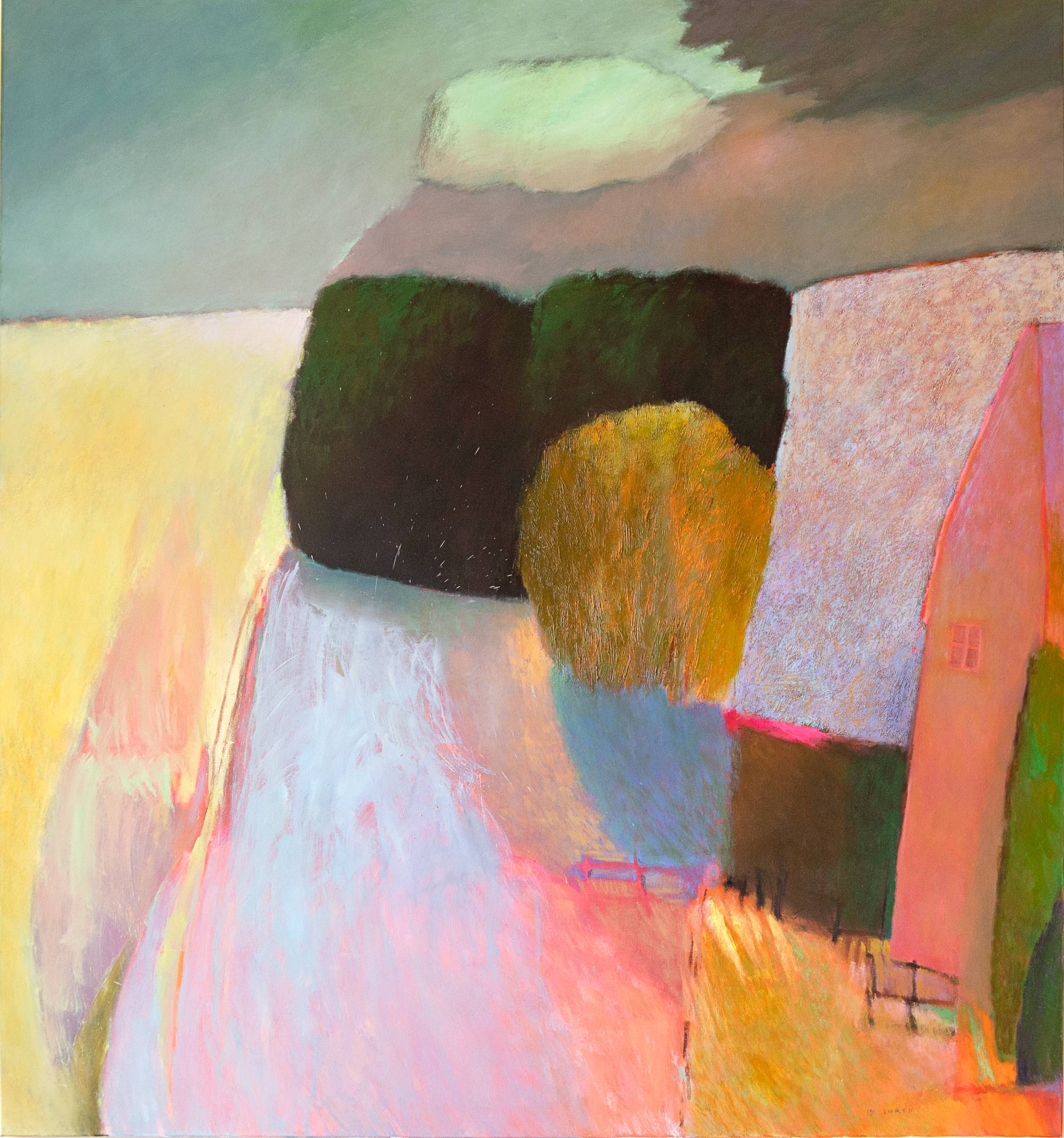
Stephen Duren, Untitled, oil on canvas, circa 1990. 2007.004.1
Armand Merizon
As a boy growing up in Grand Rapids, Michigan, Armand Merizon lived through the Great Depression, joined the military during World War II, and studied art in New York and Europe. He was a visionary who experienced the world at-large to be both his most suited classroom and greatest teacher. Merizon was an artist who refused to be held to any one style or template for how art should be represented. He threw off the mantle of tradition and perfected his own style, adding bright colors, abstract patterns, and textures to even the most common of landscapes. He proved to be a prolific painter, even after having been diagnosed with macular degeneration and rheumatoid arthritis. These health issues forced him to evolve his painting style, but never slowed his dedication to the arts.
Mathias Alten
The German-born American Impressionist Mathias Joseph Alten, often referred to as the Dean of Michigan painters, is regarded as one of the most celebrated regionalist artists to have worked in the United States. Based in Grand Rapids, Michigan, Alten created more than 3,000 works of art during his prolific career including landscapes, seascapes, portraits, florals, and still-lives. Working in a traditional representational style, Alten incorporated the aesthetics and techniques of the Impressionist Movement into paintings infused with light and punctuated with deft brushwork. Here, you can learn about Alten's life and his work that is part of Grand Valley State University's permanent collection, the largest known public Alten collection of its kind in the world.
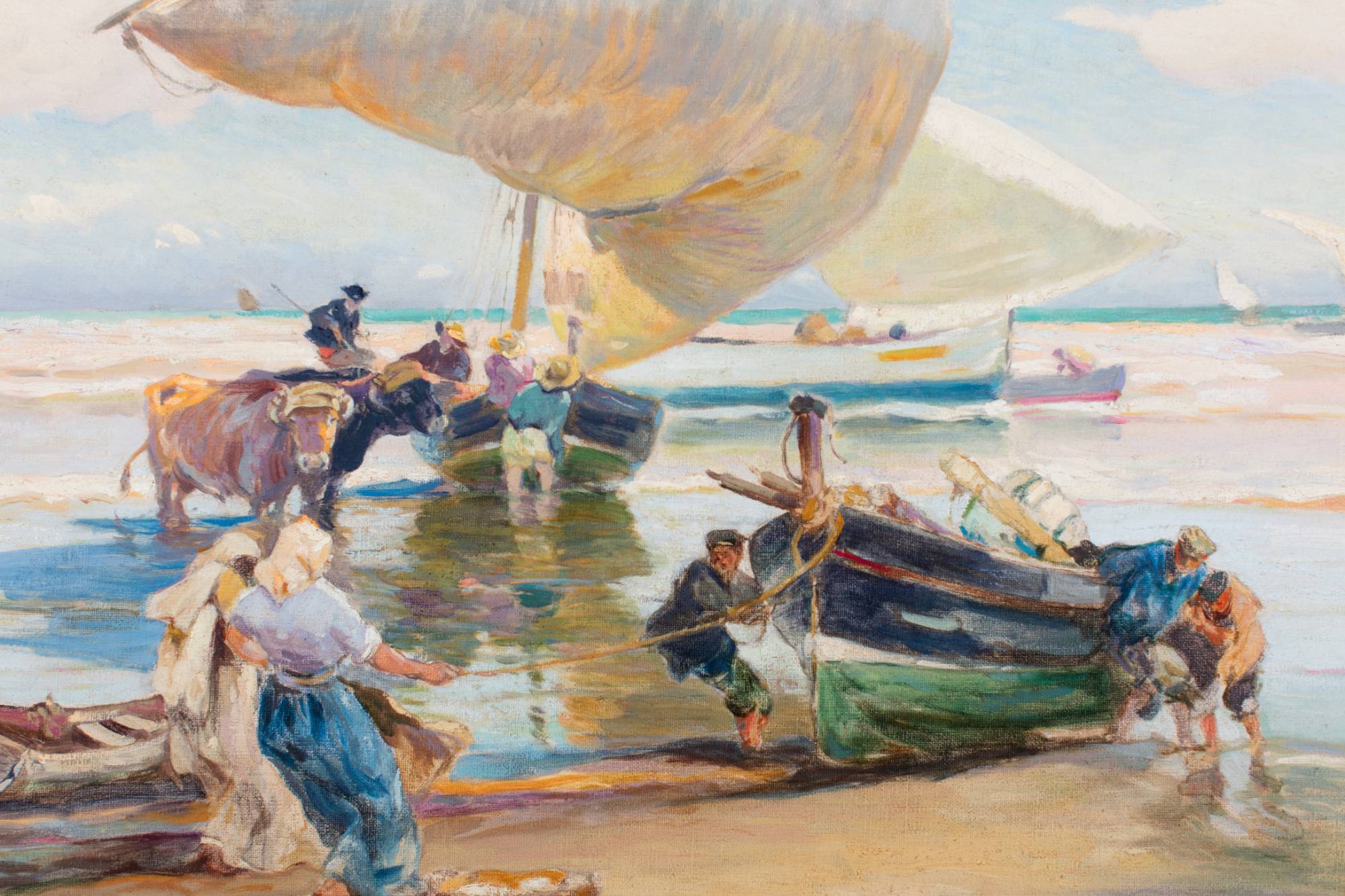
Mathias J. Alten, Windy Day, Cabañal, oil on canvas, circa 1922. 1998.591.1
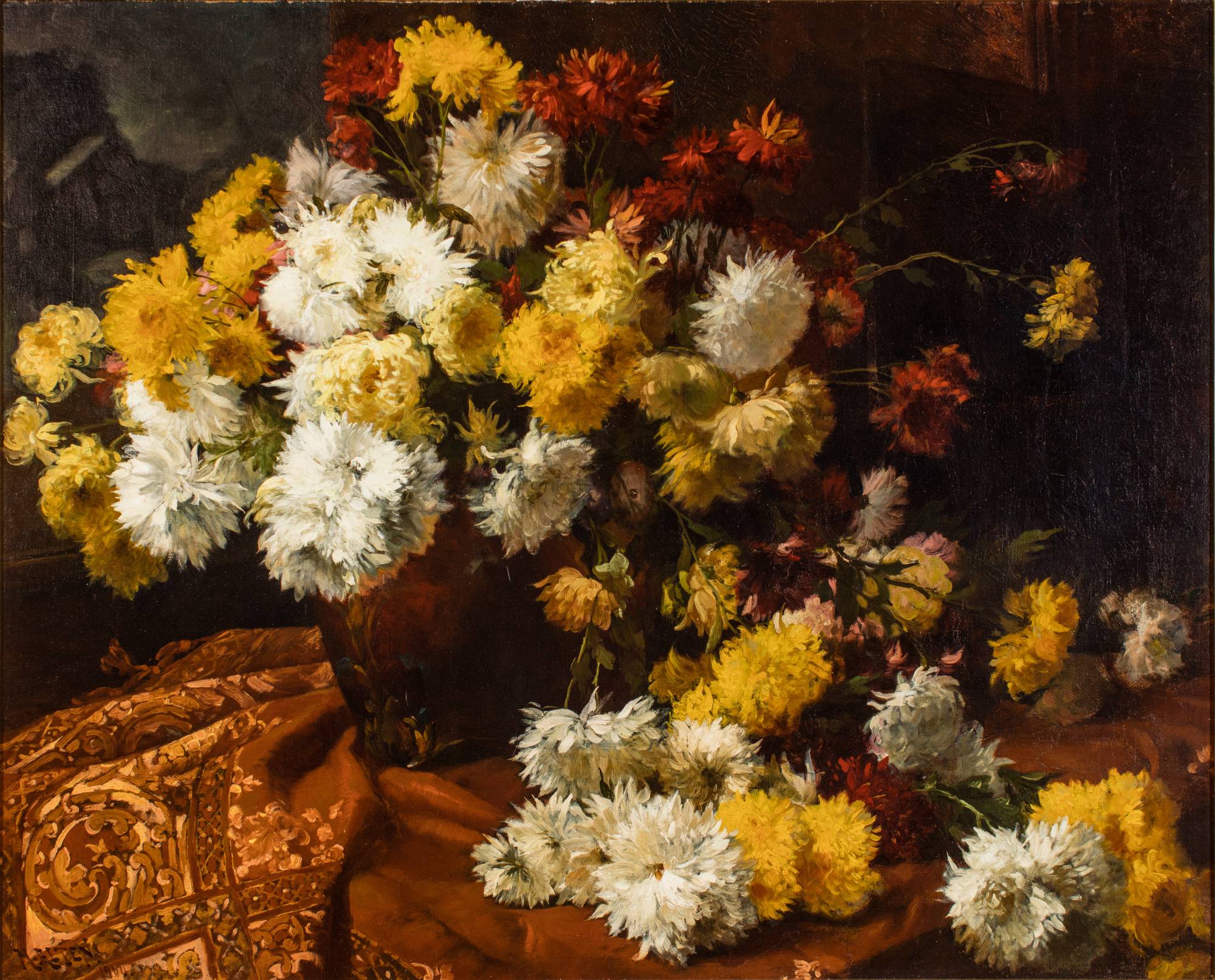
Mathias J. Alten, Chrysanthemums, oil on canvas, circa 1900 2021.86.21
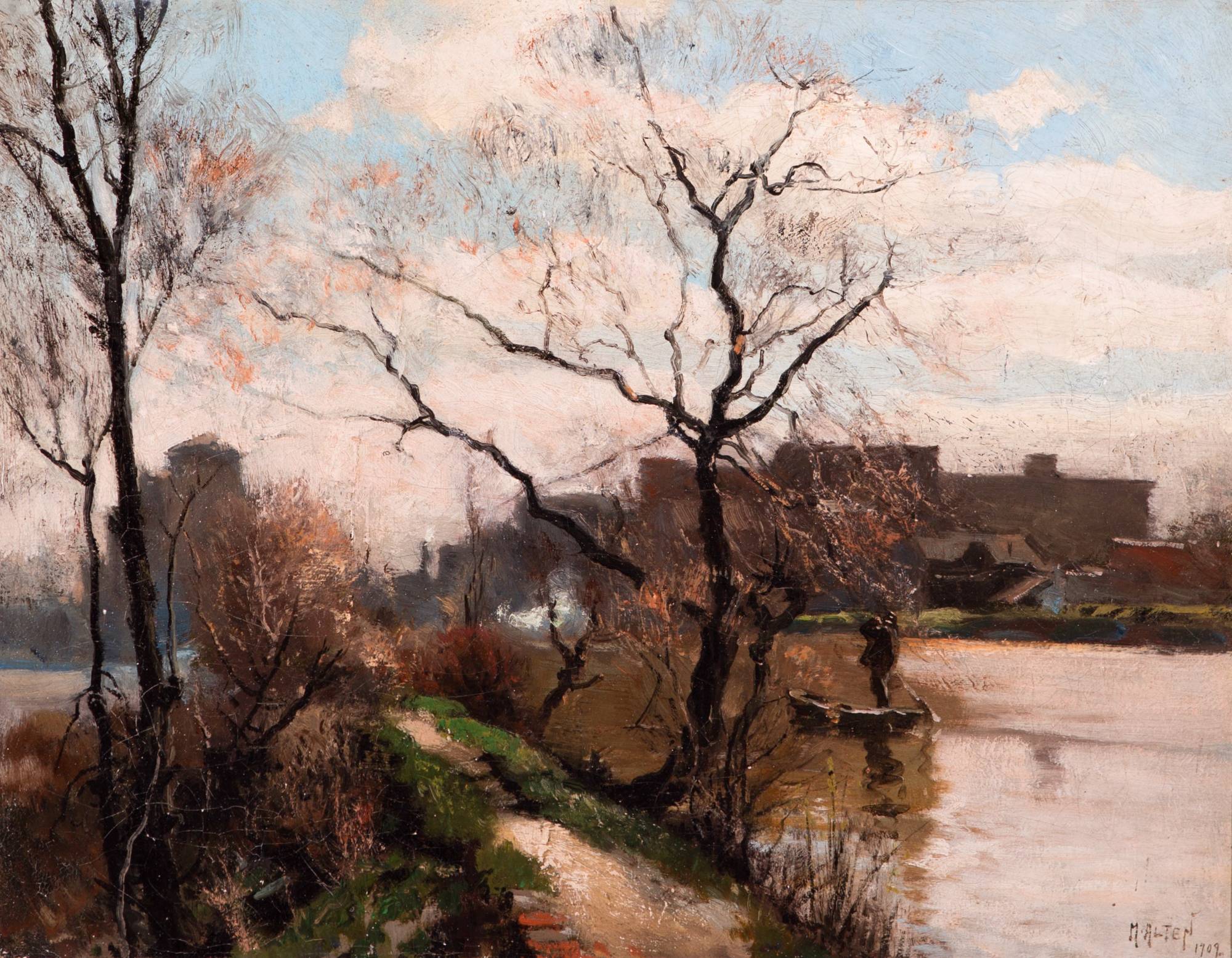
Mathias J. Alten, Looking North Along the Grand From Lower Island, oil on canvas, 1909. 2021.86.36
Vera Klement
Through her artwork, Vera Klement shows us a powerful, personal vision from a career spanning over six decades. Klement's work reflects an amalgamation of her many influences; from classical music, to literature, to modern art and filtered through her formative experience of fleeing the Nazis with her family just before World War II, and a lifetime examining that loss of home and identity. While painting with broad, powerful brush strokes, Klement also focuses on white space in her paintings, illuminating the objects she paints on the canvas.
Stewart Ashlee
Stewart Ashlee was born in 1929 in Detroit. Throughout his childhood, he suffered from severe asthma, which prevented him from regularly going outside during the summer. As a result, Ashlee would stay in his room, letting his vivid imagination and creativity direct his drawings and paintings. Initially drawn to landscapes early in his career, Ashlee increasingly became known for his depictions of the human figure in social settings and intimate moments.
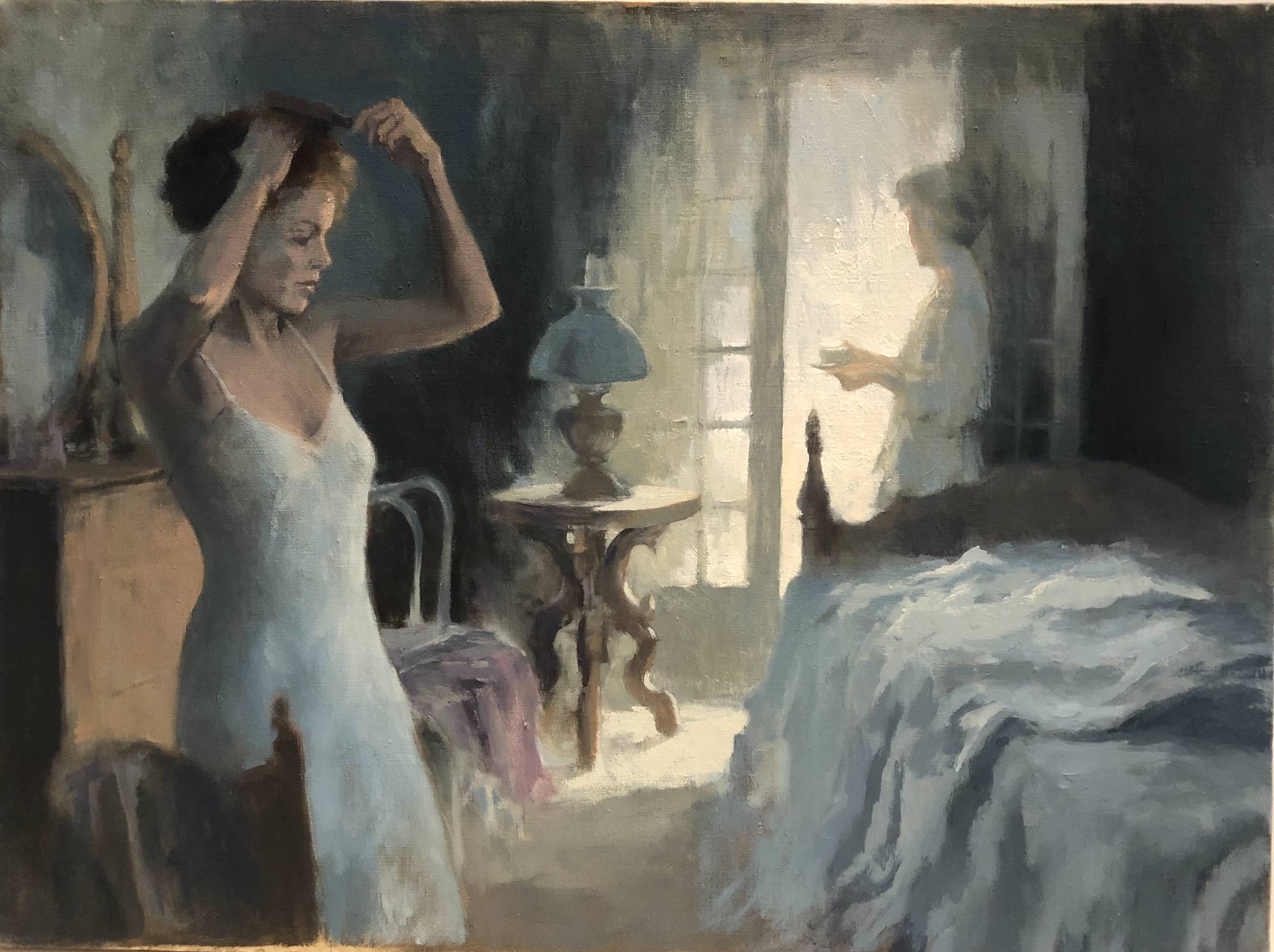
Stewart Ashlee, Untitled, oil on canvas, undated. 2020.22.8
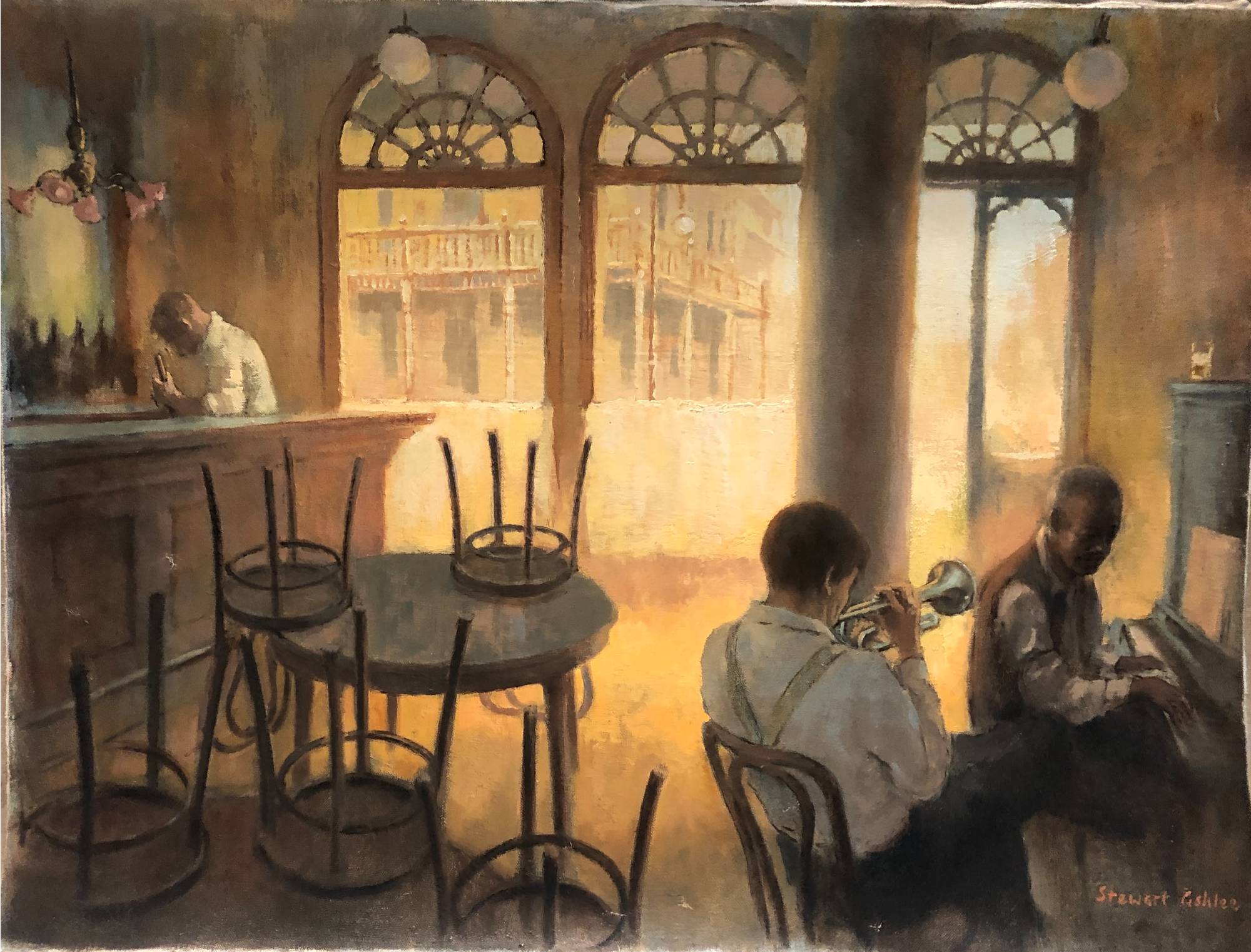
Stewart Ashlee, Untitled, oil on canvas, undated. 2020.22.18
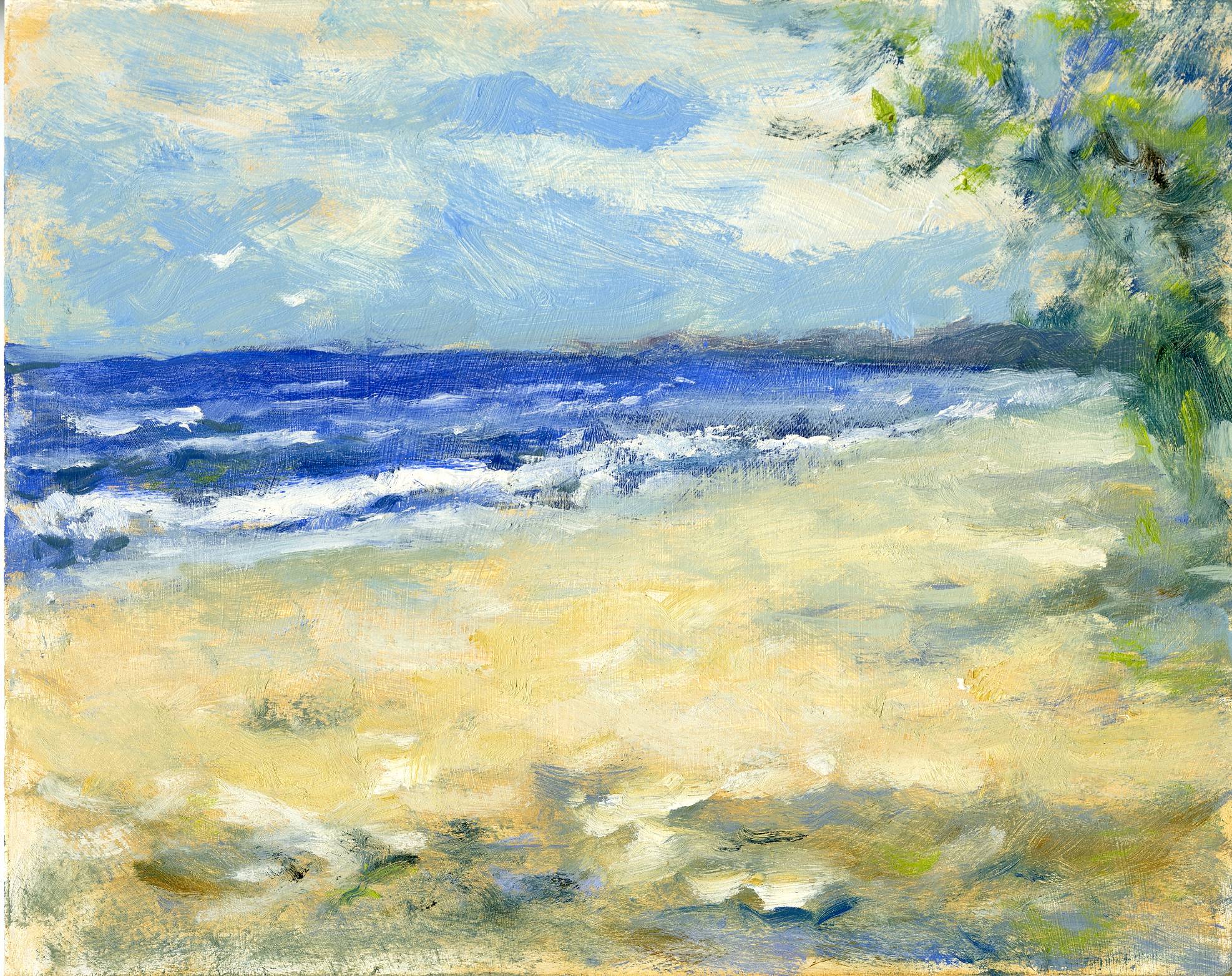
Stewart Ashlee, Untitled, oil on board, undated. 2019.68.23
Acrylic Painting
Compared to oil paints and watercolor, acrylic paints are a relatively modern medium. In 1915, German chemist Otto Röhm secured a patent for polyacrylic ester as a paint binder. His original intention was to create industrial paints that dried quicker, but by the 1940s, an early version of today’s acrylic paints were being sold commercially worldwide.
Acrylic paints consist of ground pigments and an acrylic polymer binder that is combined with water. Acrylic paints are known for their versatility and durability. They dry rapidly and can create the same transparency of color as watercolors as well as the same density of oil paint. They come in bright colors and can be used to create sharp brushstrokes and lines. They can also be used on a variety of surfaces and can easily be mixed with other mediums.
Rosie Lee
From the West African influence of the Geechee in South Carolina to the creole flavor in the Ninth Ward of New Orleans, Louisiana, Rosie Lee’s artwork is inspired by and speaks to the diversity found amongst African Americans. His paintings highlight the history and culture of African American communities through vibrantly rendered architectural structures, iconography, and black figures in abstraction.
Reb Roberts
Reb Roberts is an artist, educator, and collaborator who remains active and involved in the Grand Rapids community and local art scene. Born and raised in New Orleans, Reb arrived in West Michigan in 1972 and enrolled at Grand Valley’s William James College. In the mid-1990’s Reb began to intentionally focus on creating works of art for public spaces. His work is full of bright, cheery colors and inspirational sayings.
Virginia Jenkins
Throughout Virginia Jenkins’ career, natural landscapes have been a focus of hers, allowing her to highlight organic forms and shapes that can only be experienced in nature. While her images are somewhat abstract, the shapes and colors within her paintings are still recognizable as nature. Her inspiration often comes from her travels around the country, from the peaks of mountains to the depths of the ocean.
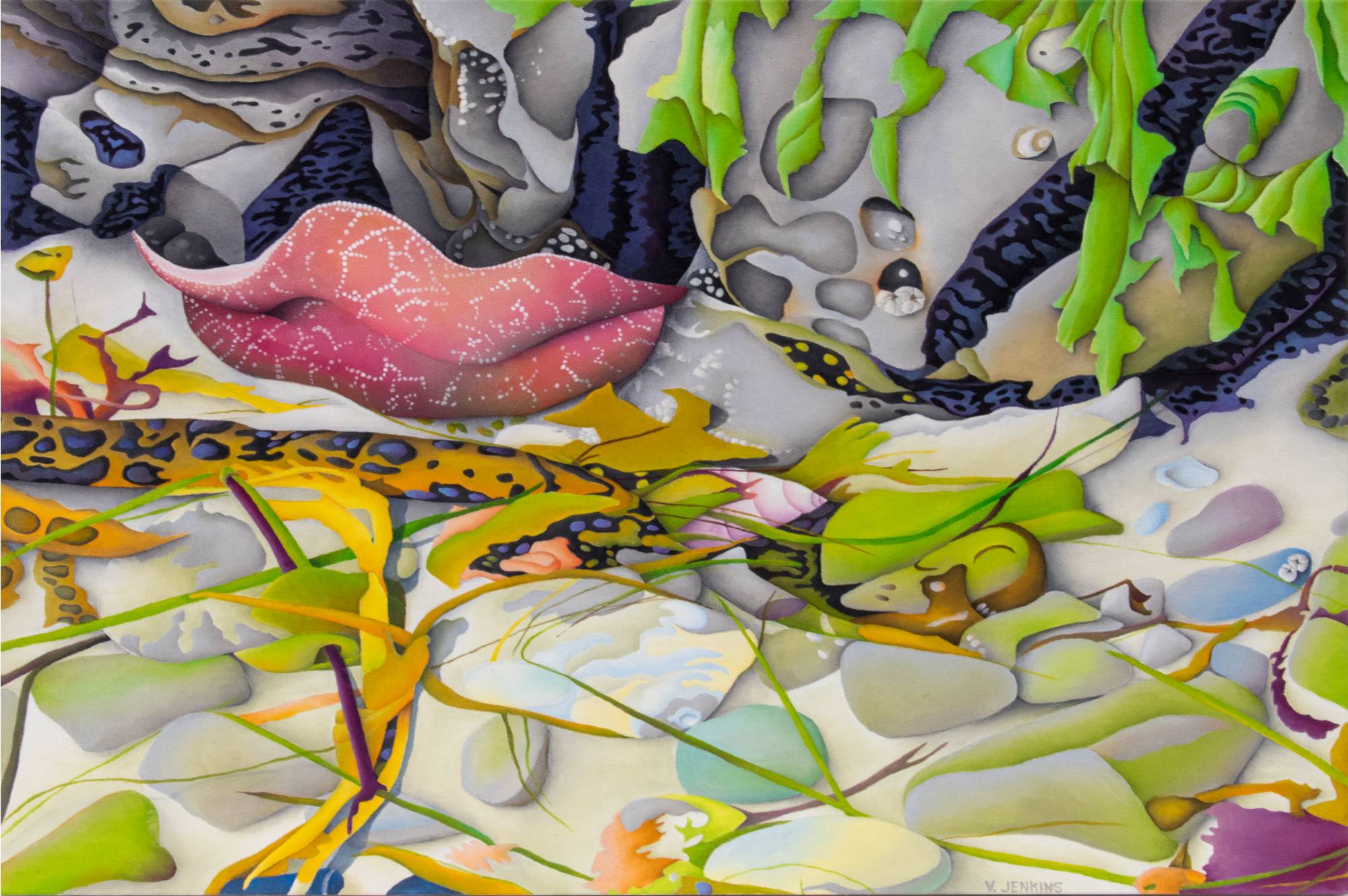
Virginia Jenkins, Pool of Treasures, acrylic on canvas, 2017. 2018.56.1
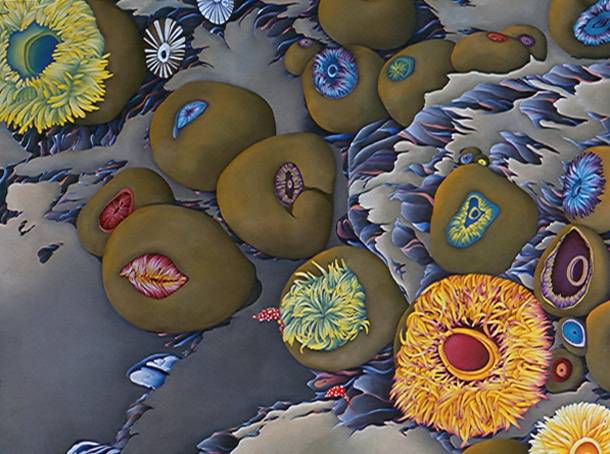
Virginia Jenkins, Forever and a Day, acrylic on canvas, undated. 2014.111.1
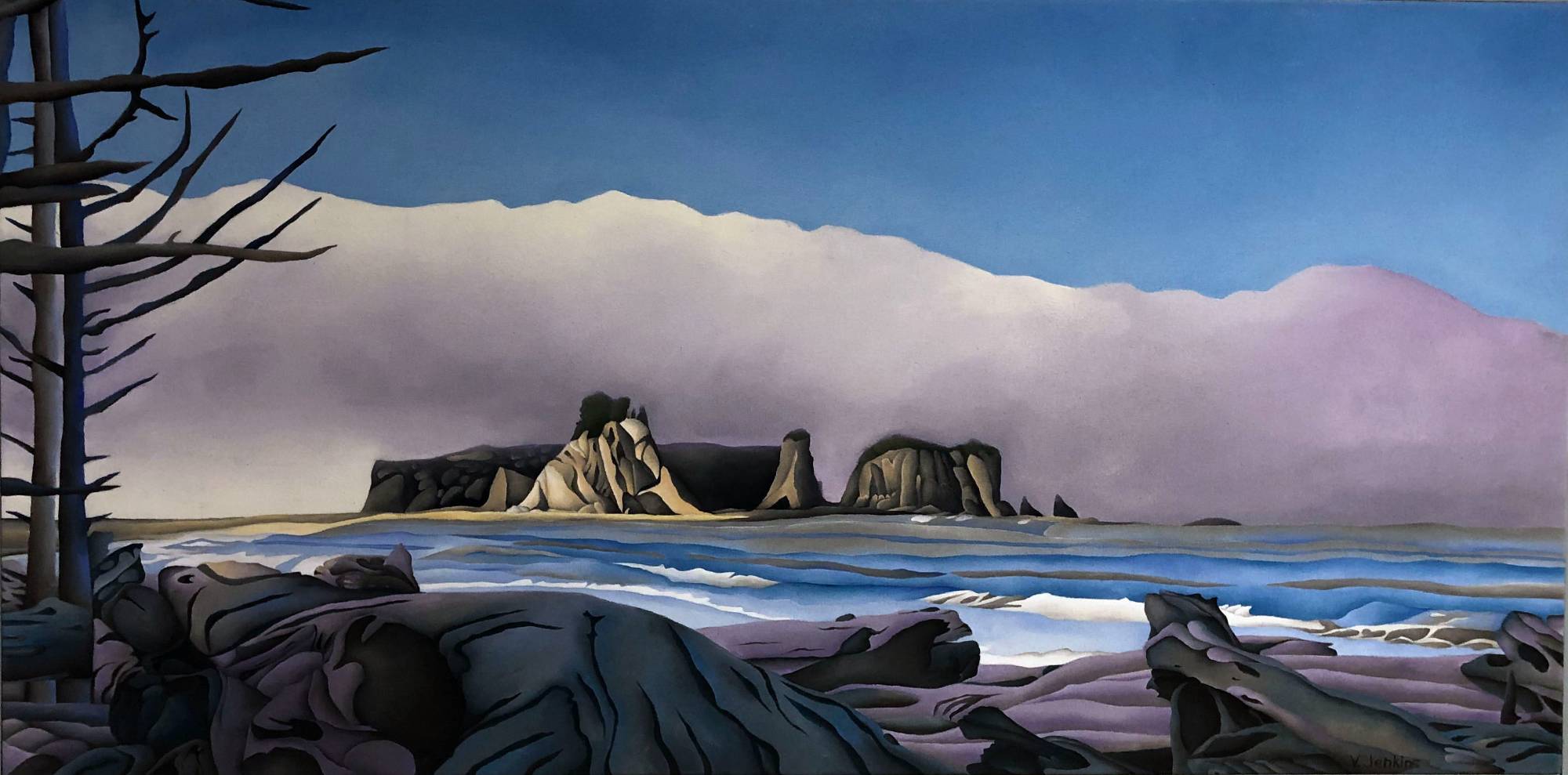
Virginia Jenkins, Morning Fog, Rialto Beach, acrylic on canvas, undated. 2019.53.1
Cheonae Kim
Cheonae Kim is an artist based in Astoria, New York who obtained her Master of Fine Arts degree in painting, drawing, and printmaking from Southern Illinois University. She is best known for her crisp and brightly colored, repetitive paintings. Through her abstract images, Kim looks to elevate the human spirit through line, form, space, and color.
Watercolor Painting
Watercolor, referring both to the medium and the resulting artwork, is a painting method in which the paints are made of pigments suspended in a water-based solution. The pigment dissolves when water is added, allowing the pigment to be spread with a brush, creating a translucent effect. Watercolors are easy to mix and dry quickly, allowing the painter to easily layer colors, creating different shades and hues. Yet watercolors can be unforgiving, as the paint needs to be laid perfectly the first time, as any attempt to paint over can change the darkness of a color or create a muddied effect.
Historically, watercolor paintings have been found on cave walls, papyrus, plastics, and fabrics like silk and leather. Watercolors became popular in Egypt and China before emerging in Europe during the Renaissance Period. A similar technique was used for fresco wall painting, with pigments later being applied to paper. It also became a popular way to create topographical maps. Today, the most popular surface for watercolor paints is watercolor paper, a type of paper made entirely or partially from cotton with a slightly textured surface that minimizes distortion of the paint by absorbing excess water.
Rana Chalabi
Rana Chalabi is Syrian/Lebanese artist who works in Cairo, Egypt. She works within a variety of mediums, like charcoal, inks, mixed media, oils, sculptures, and printed graphics but is best known for her serene watercolor landscapes. She often does her watercolors on site, or in ‘plein air," but also works from photographs in her studio on the banks of the Nile.
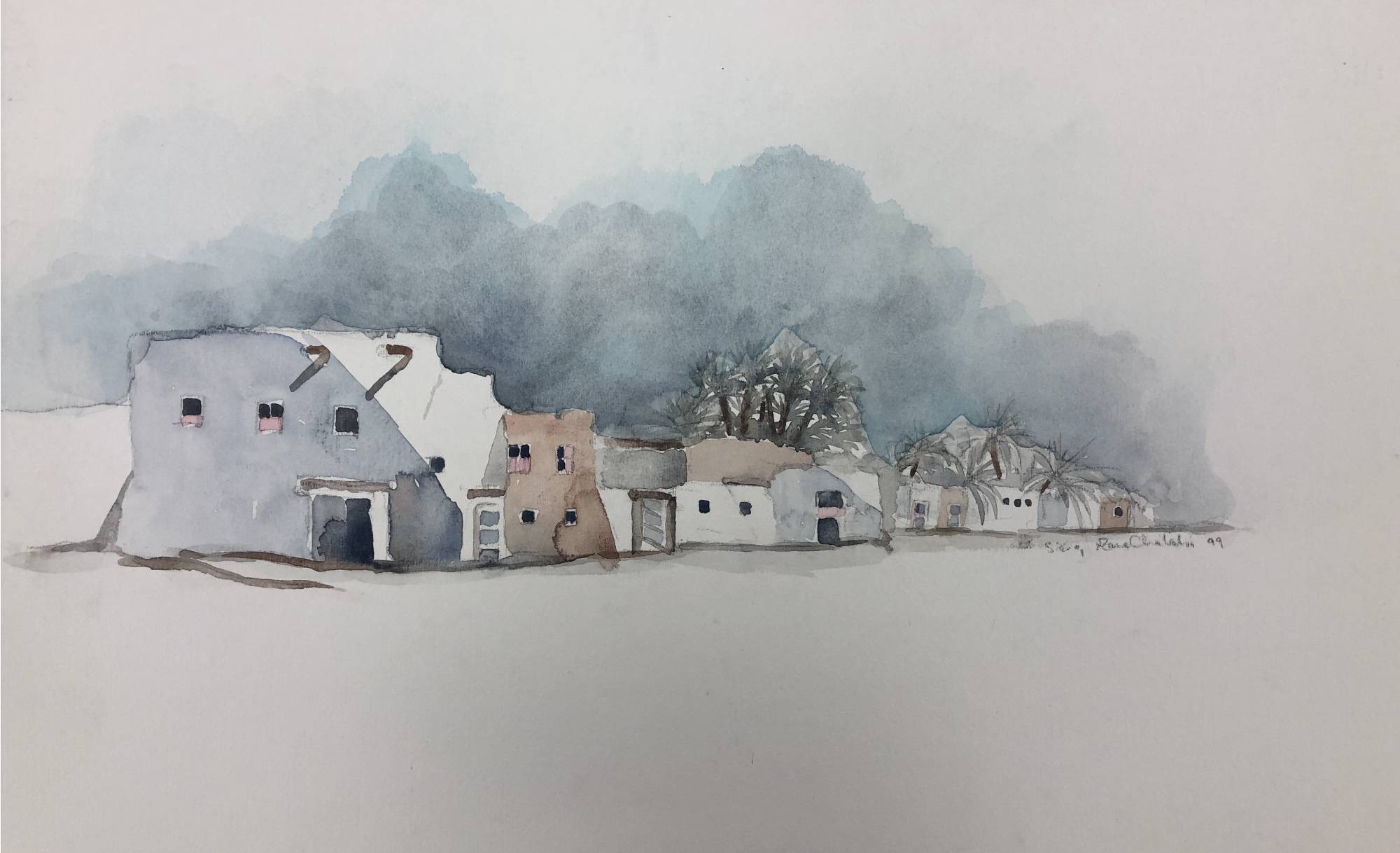
Rana Chalabi, Siwa, watercolor on paper, 1999. 2019.8.1
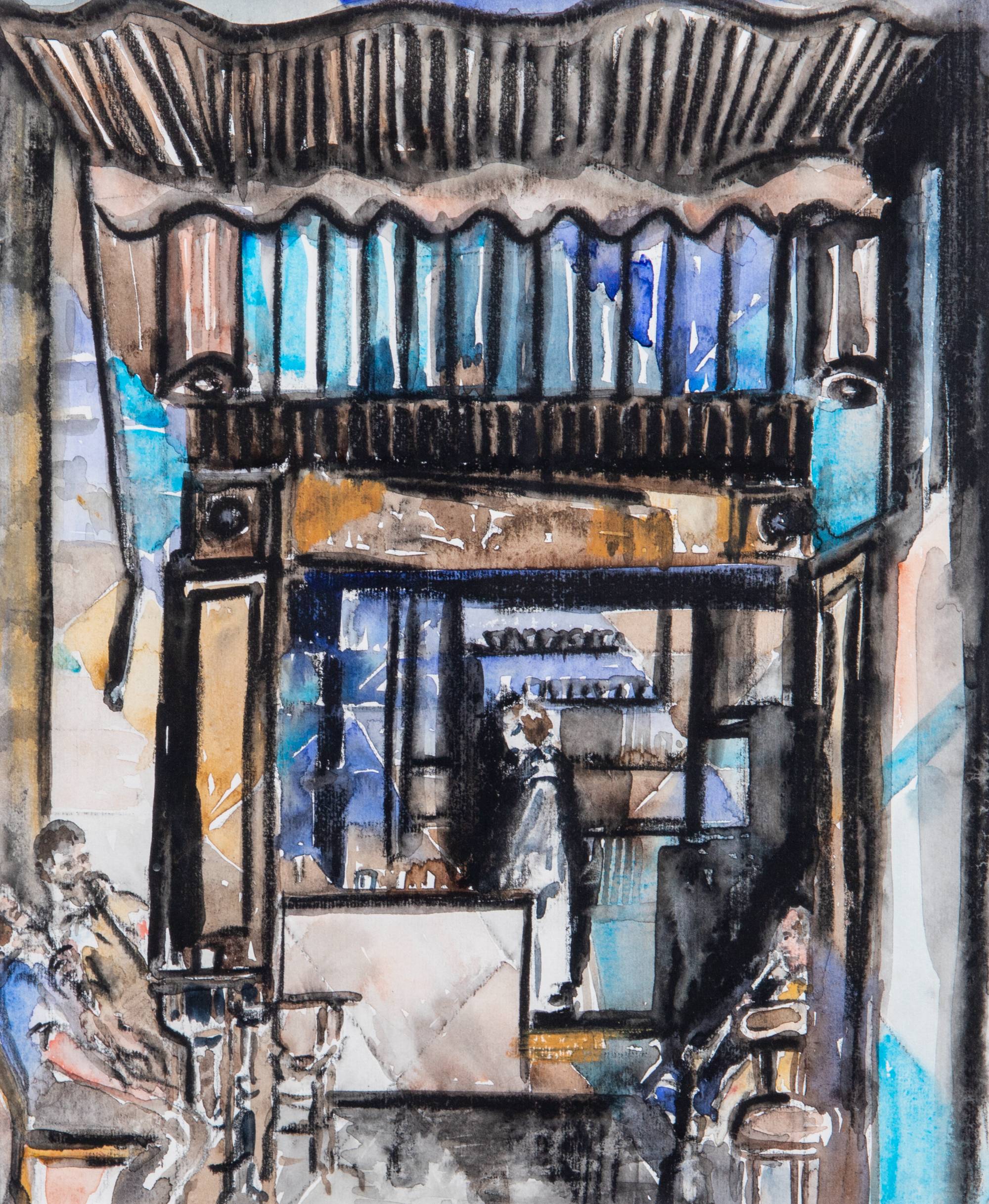
Rana Chalabi, Coffee House in Cairo, watercolor, undated. 2003.182.1
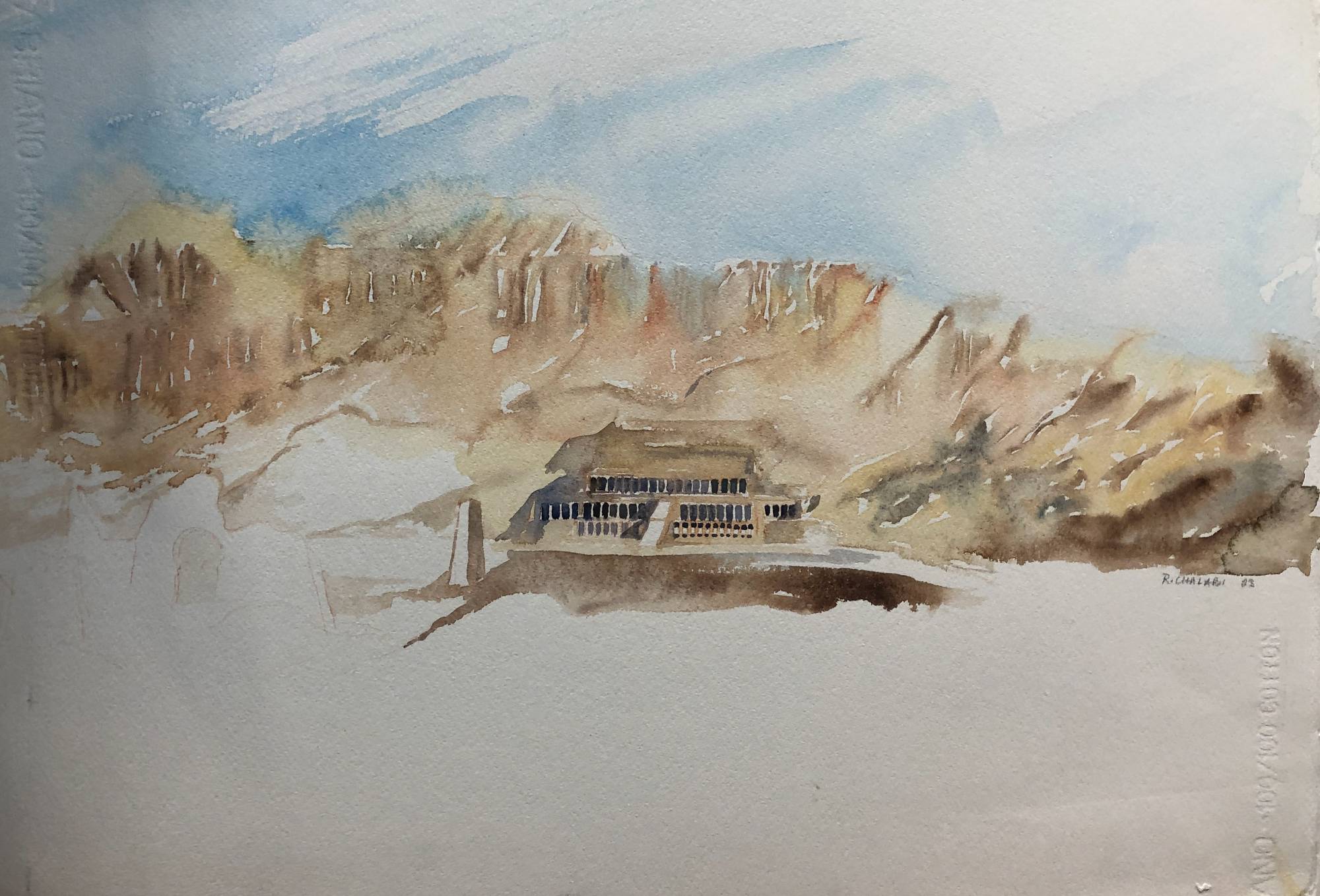
Rana Chalabi, Hatshepsut, watercolor, 2003. 2005.142.1
Mike McDonnell
Mike McDonnell was a Muskegon, Michigan based artist who studied art in both Chicago and New York. Initially receiving training in classical portraiture and working primarily with oil paints, it wasn’t long before McDonnell found his own style within watercolors. He became well known for still life paintings with the most absurd arrangement of items, often precariously stacked, in dynamic colors. McDonnell would apply multiple, thin, layers of watercolor paint to achieve the rich, vibrant and realistic images he painted.
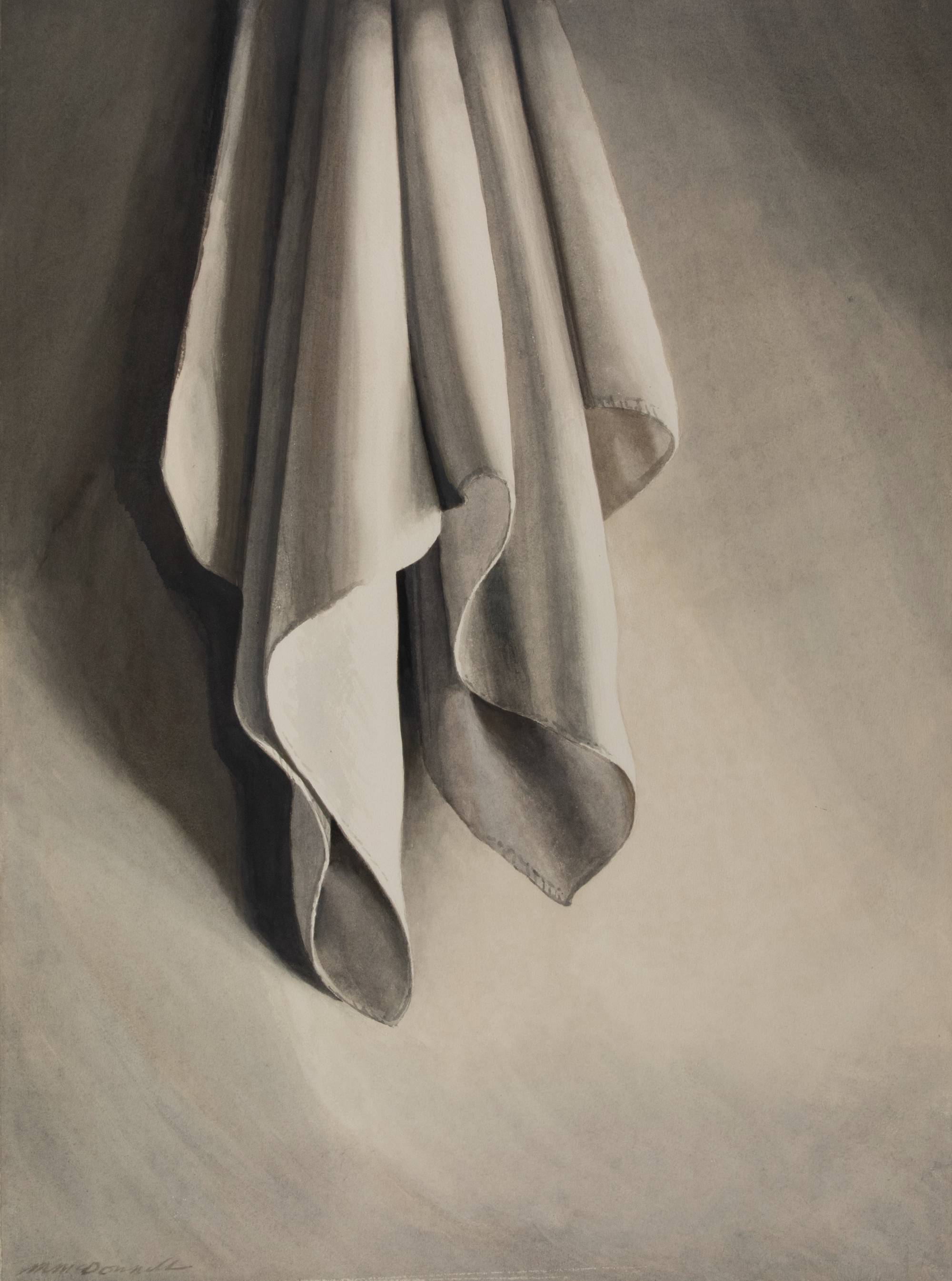
Mike McDonnell, Towels, watercolor, circa 1982. 2013.2.8
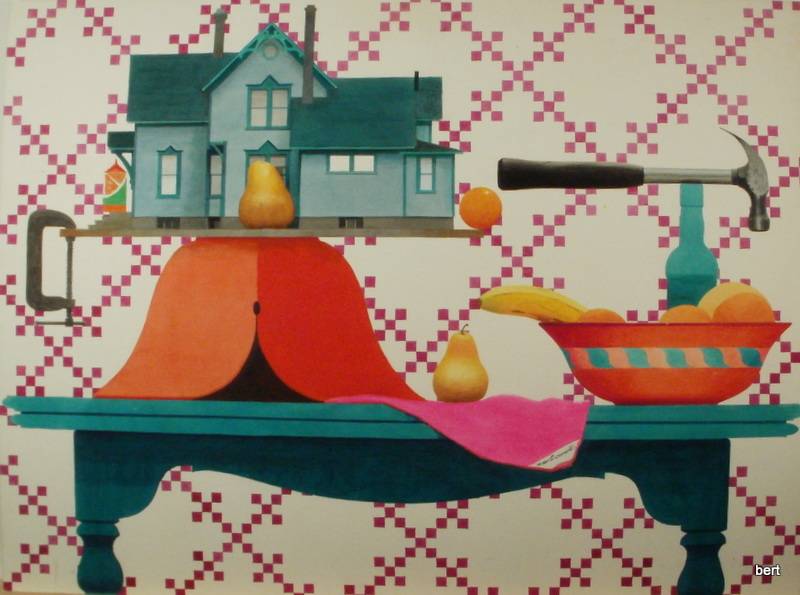
Mike McDonnell, Banana Rama, watercolor on board, 1983. 2014.89.7
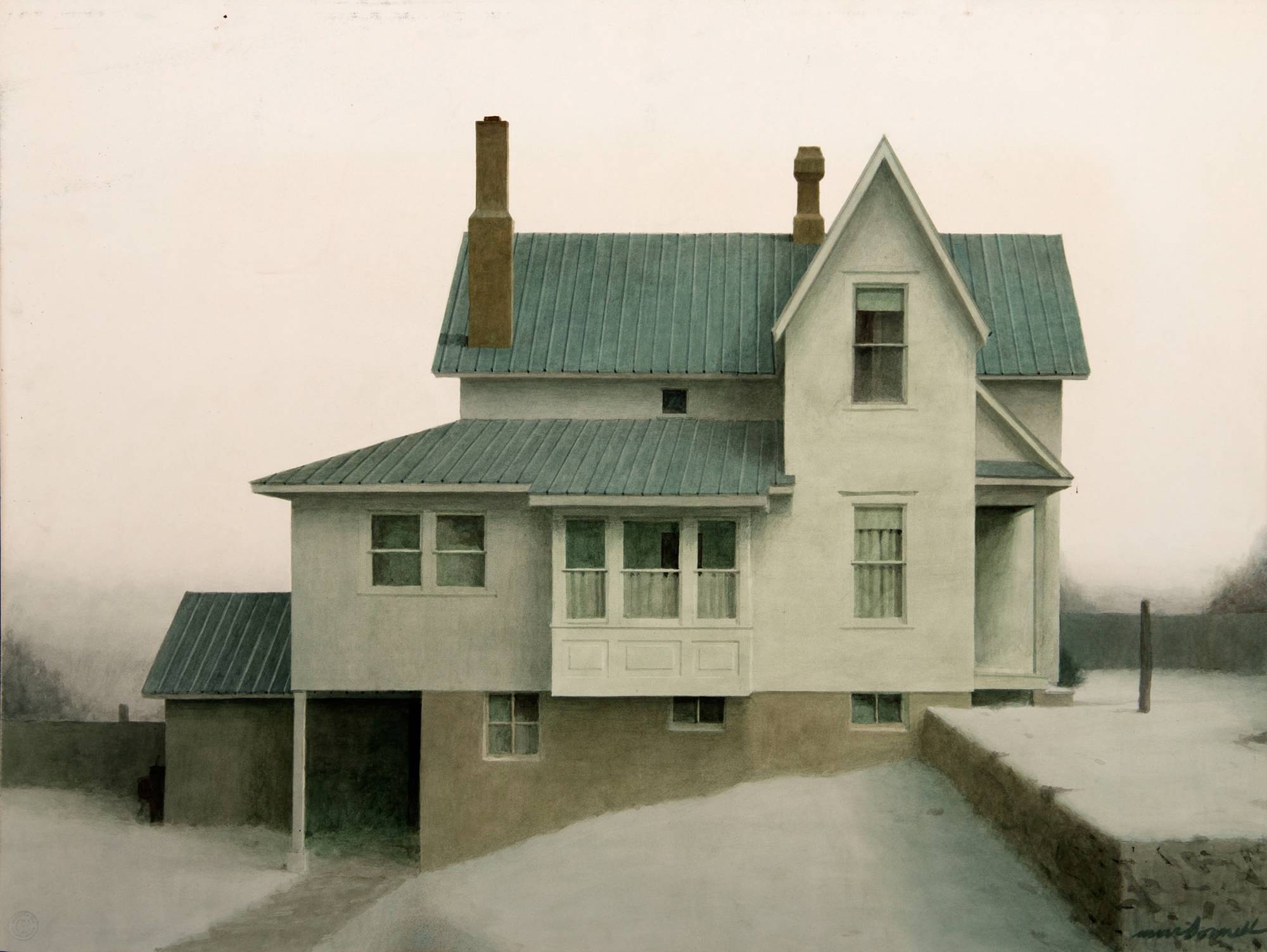
Mike McDonnell, Untitled, watercolor on board, undated. 2017.97.440
Rein Vanderhill
Rein Vanderhill’s large floral and landscape paintings include high contrast and intense colors as well as subtle gradations and shadow. Vanderhill is noted for focusing on the unusual shapes of the shadows on the leaves and petals and often making the deep and dark negative shapes between the leaves and petals the most interesting parts of the paintings. The paintings look almost photographic from a distance but when near show flowing paint strokes.
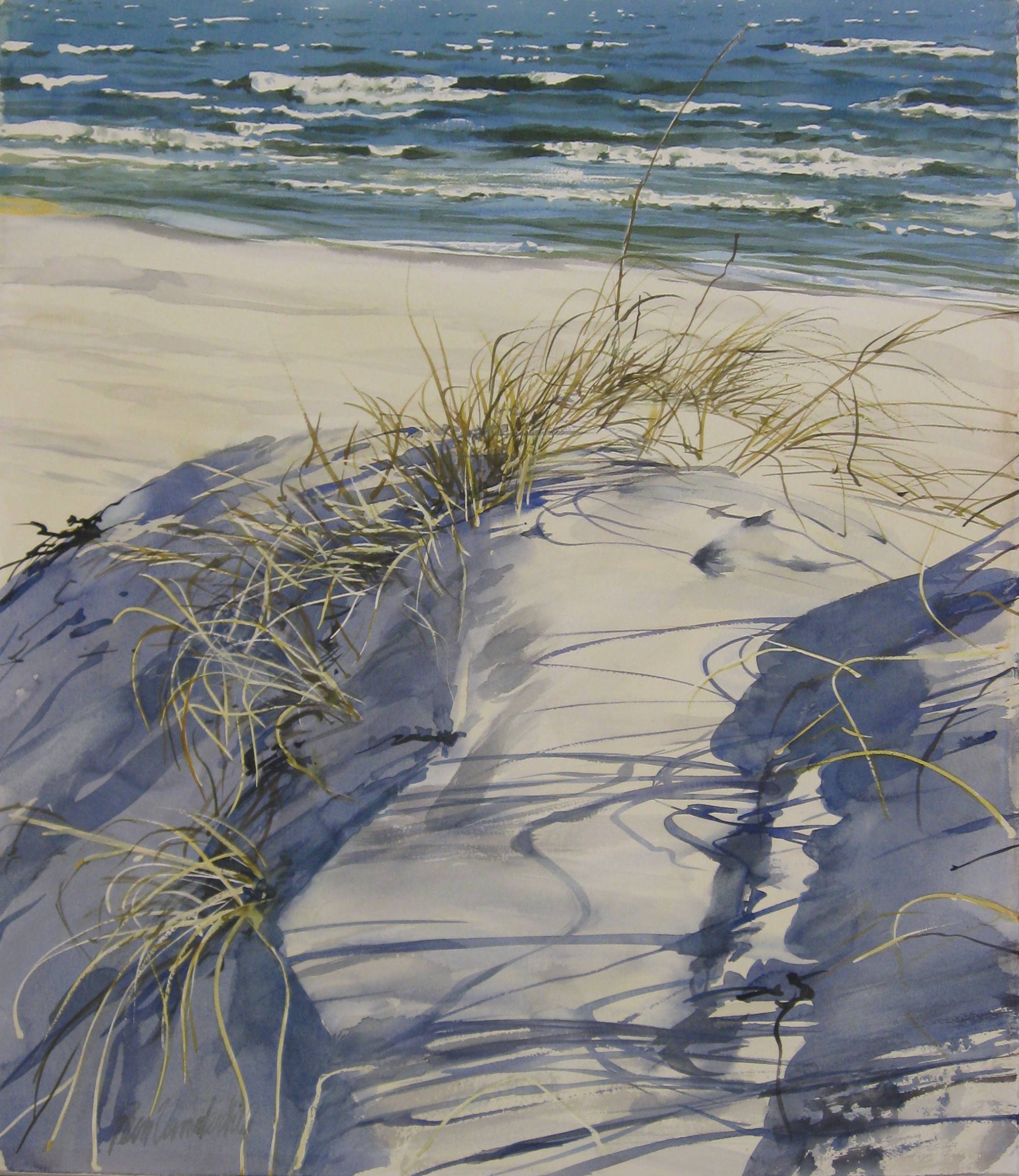
Rein Vanderhill, Untitled, watercolor, undated. 2014.113.17
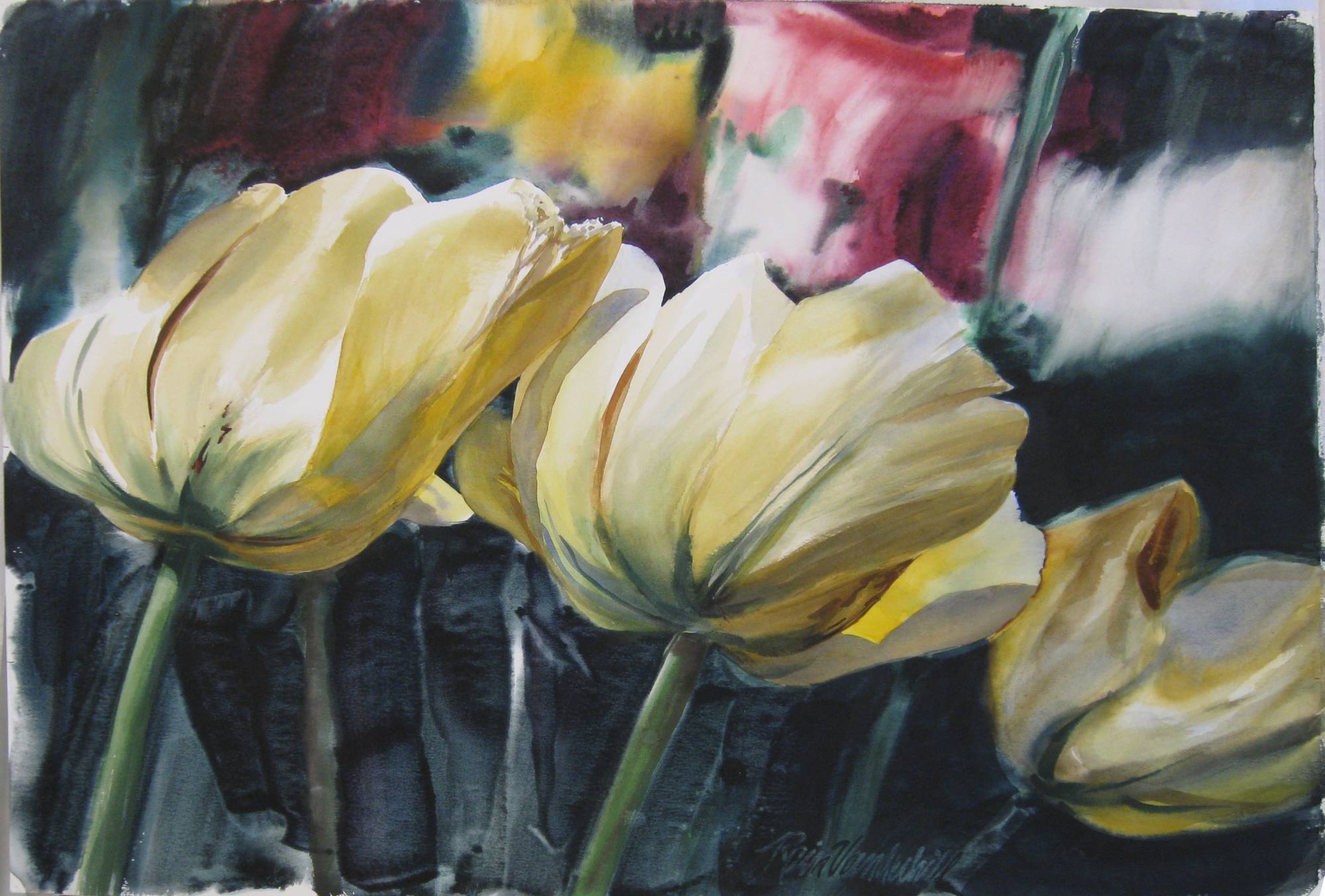
Rein Vanderhill, Untitled, watercolor, undated. 2014.113.14
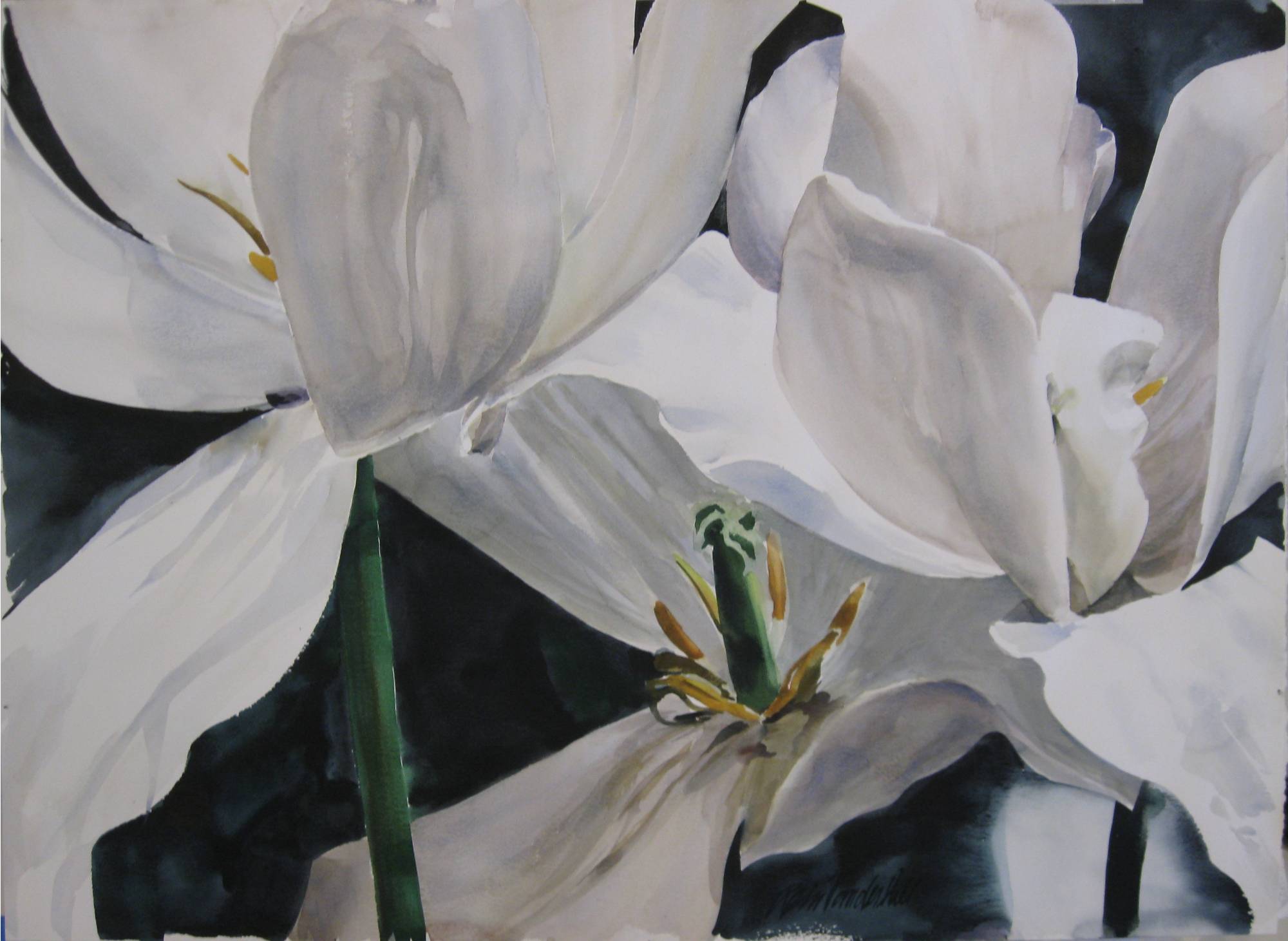
Rein Vanderhill, Untitled, watercolor, undated. 2014.113.23
Art on Campus
For more information about the artwork selection and installation process at the DeVos Center for Interprofessional Health or other buildings on campus, please contact our Project Manager, Alison Christensen; [email protected].
University Art Collection
For questions related to any artwork in the University Art Collection, in storage or on view, please contact our Collections Manager, Nicole Webb; [email protected].
Learning
For questions about integrating artwork into curriculum, please contact our UX/Learning Manager, Amanda Rainey; [email protected].


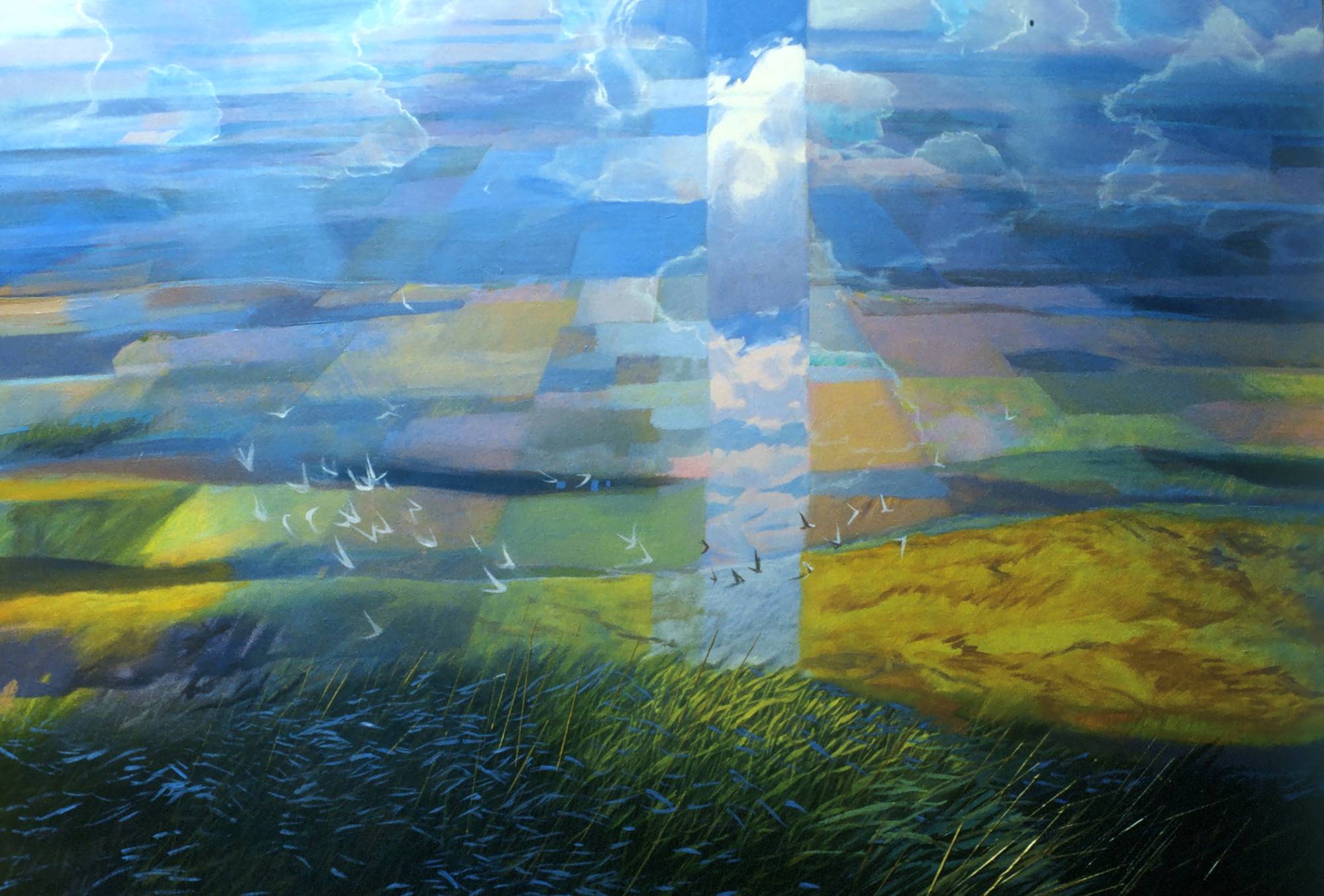
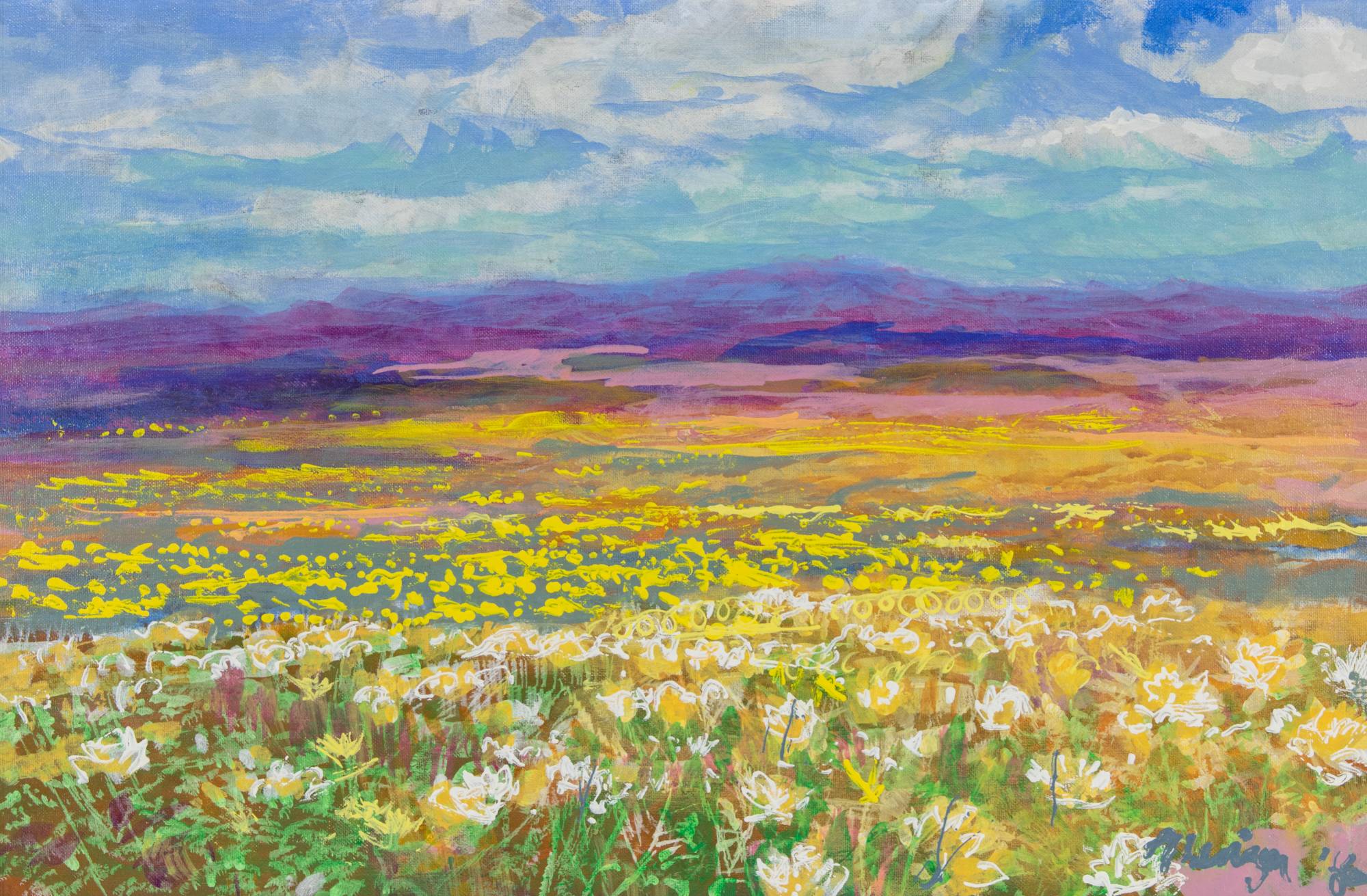
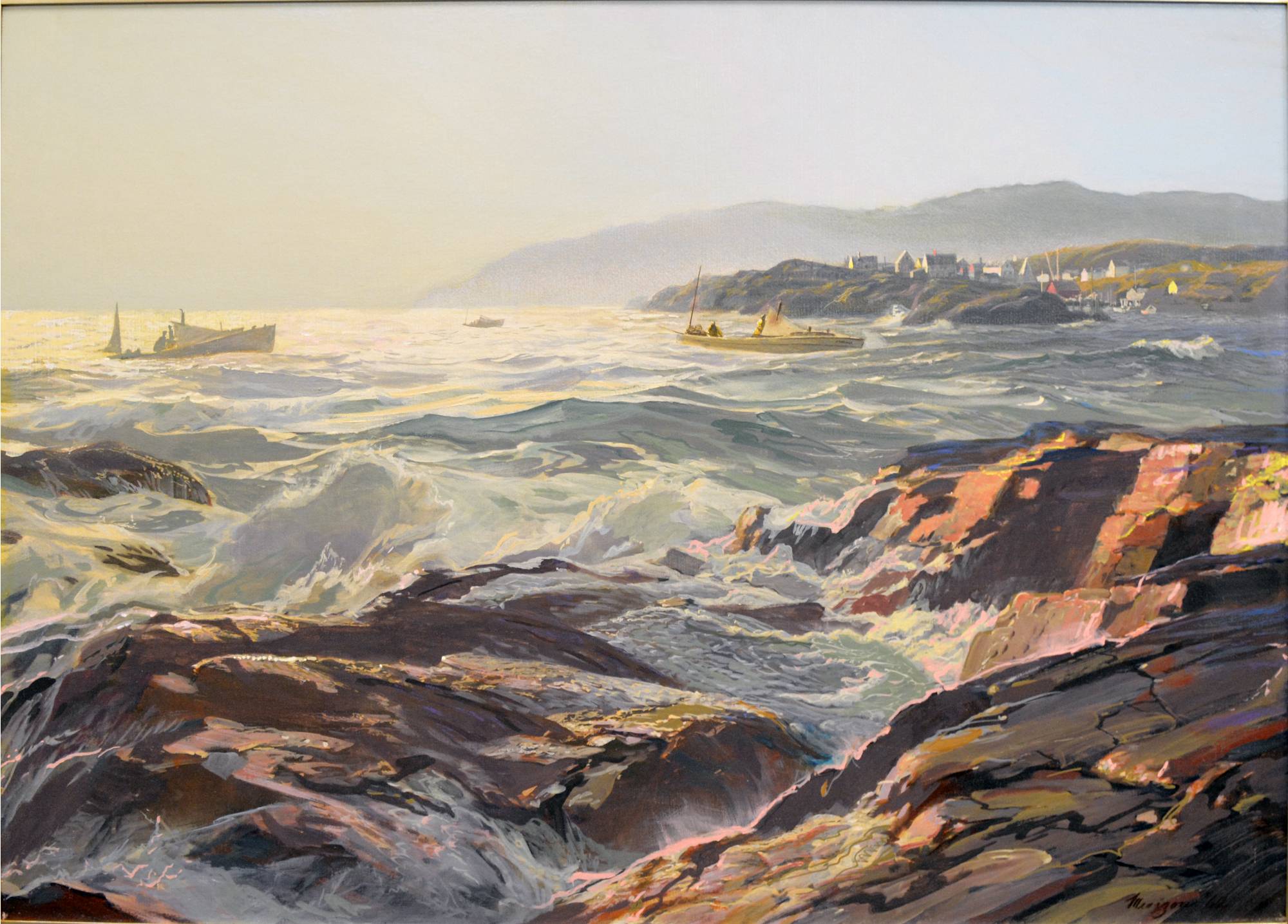
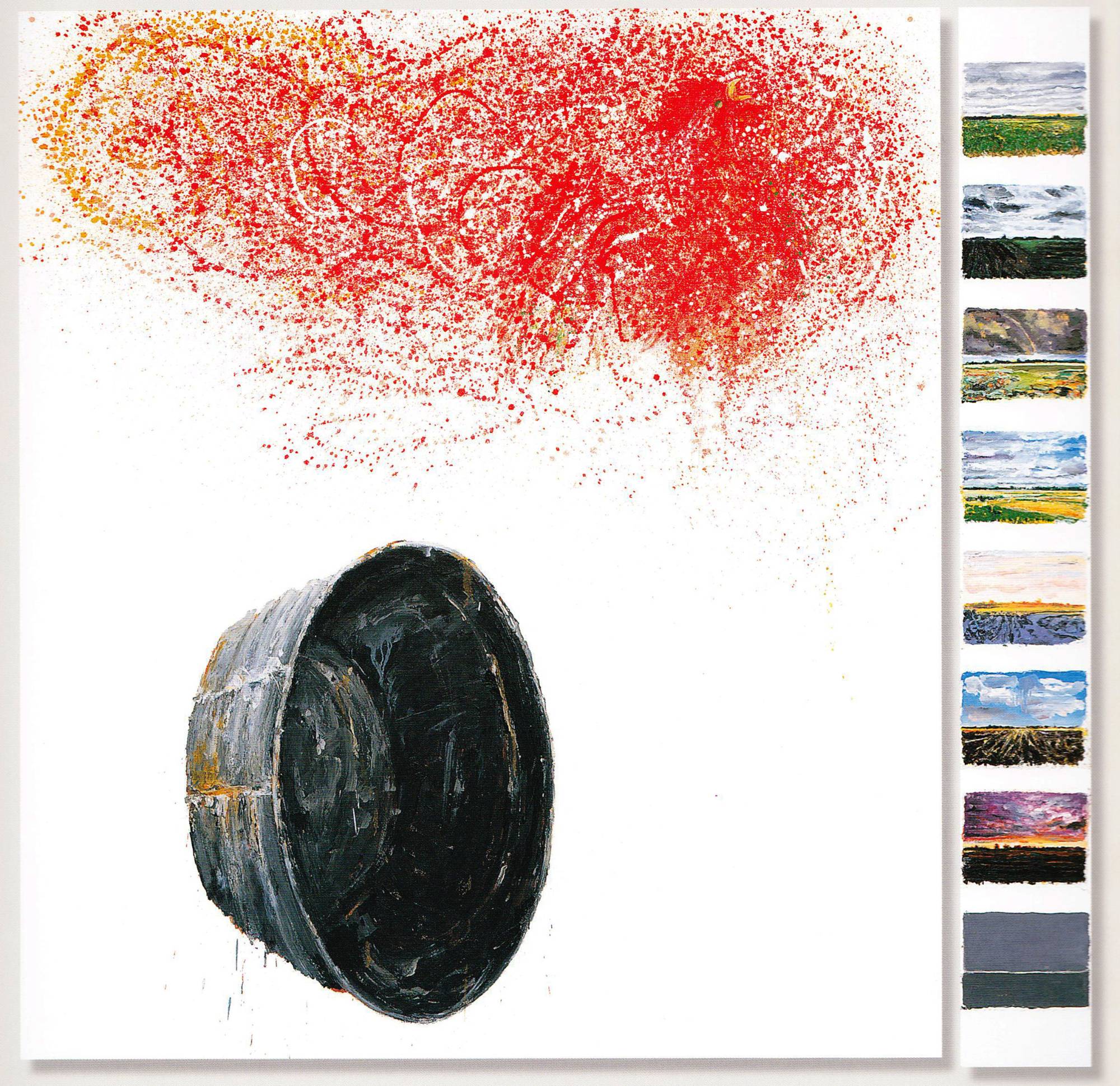
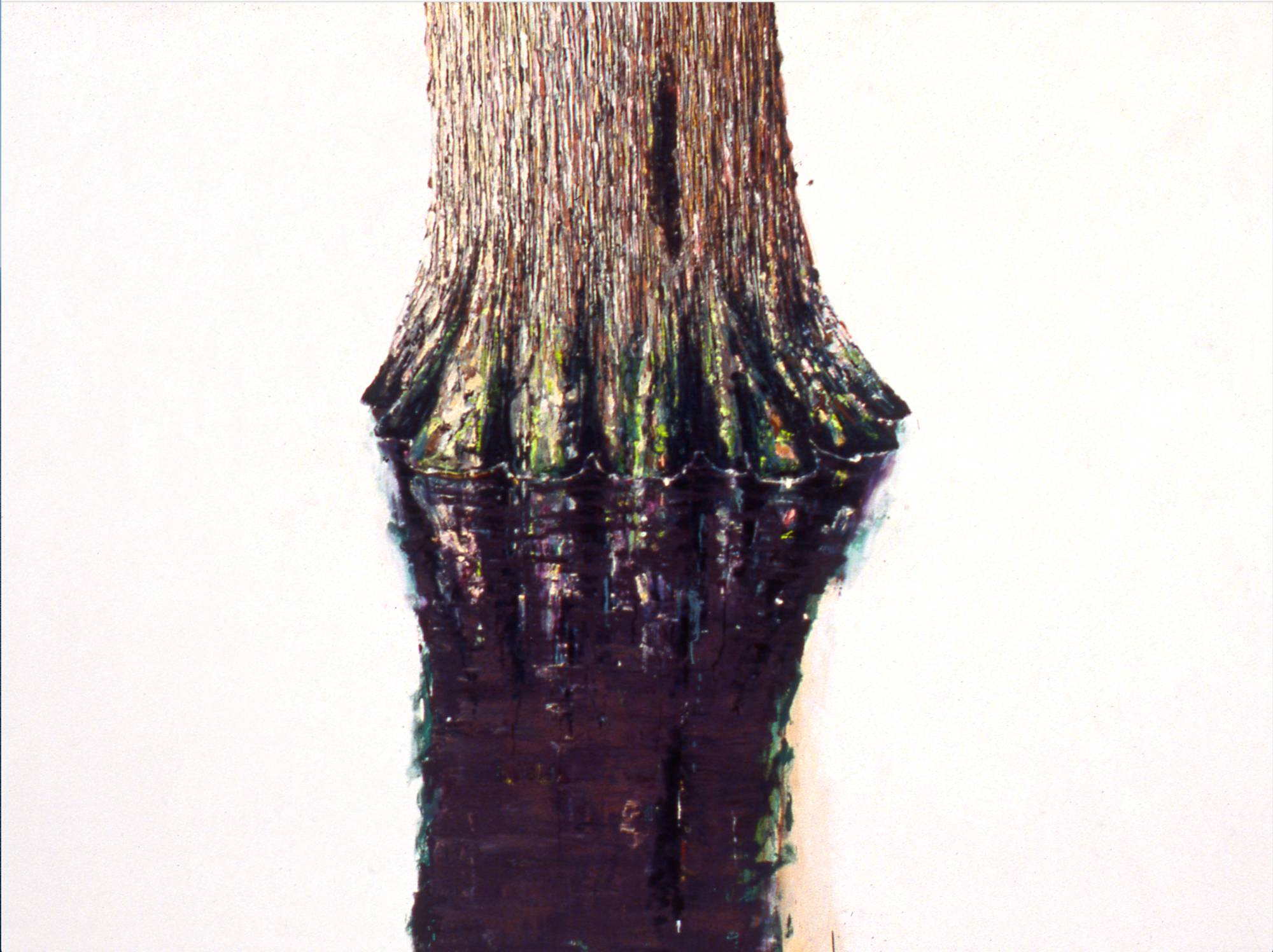
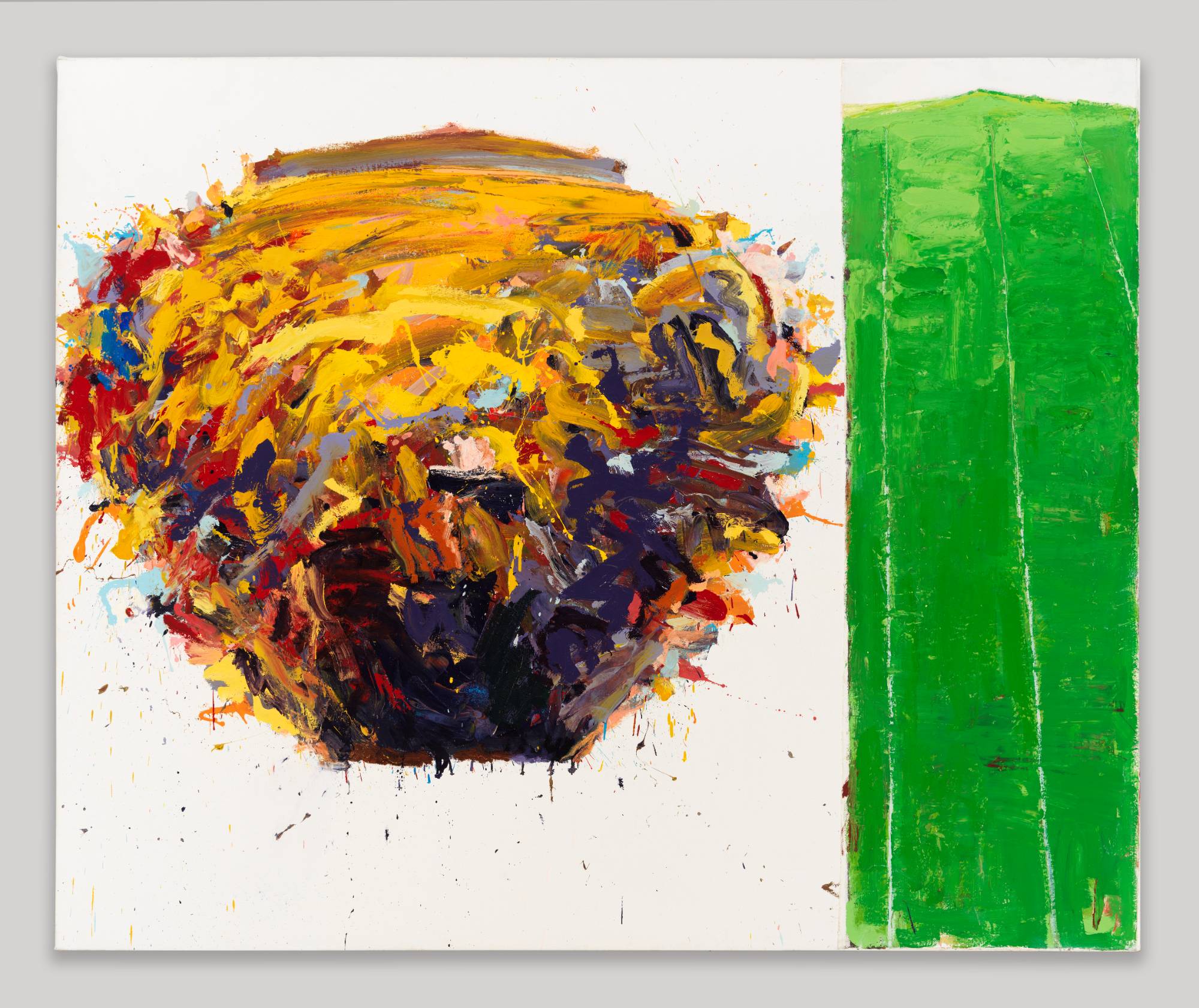
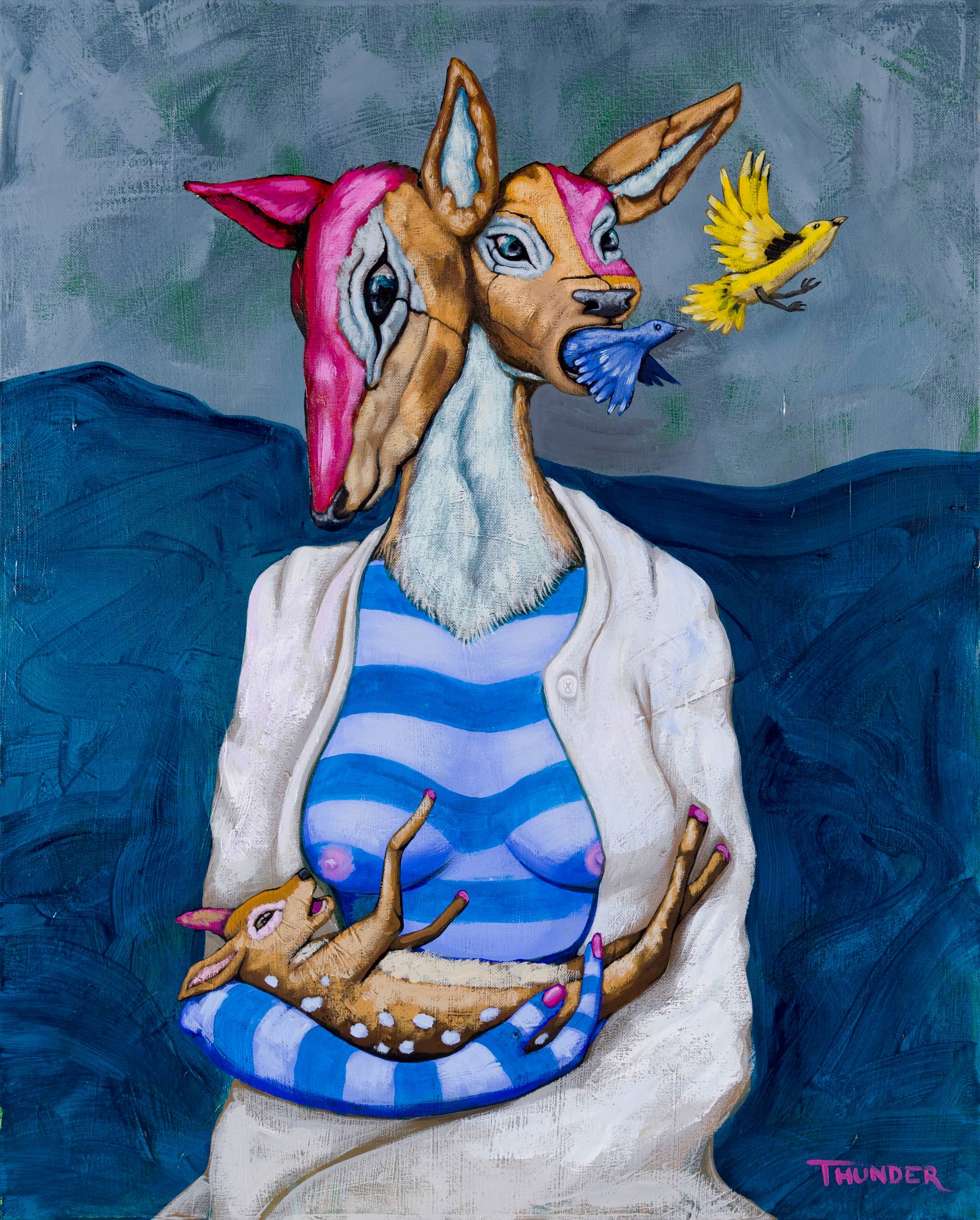
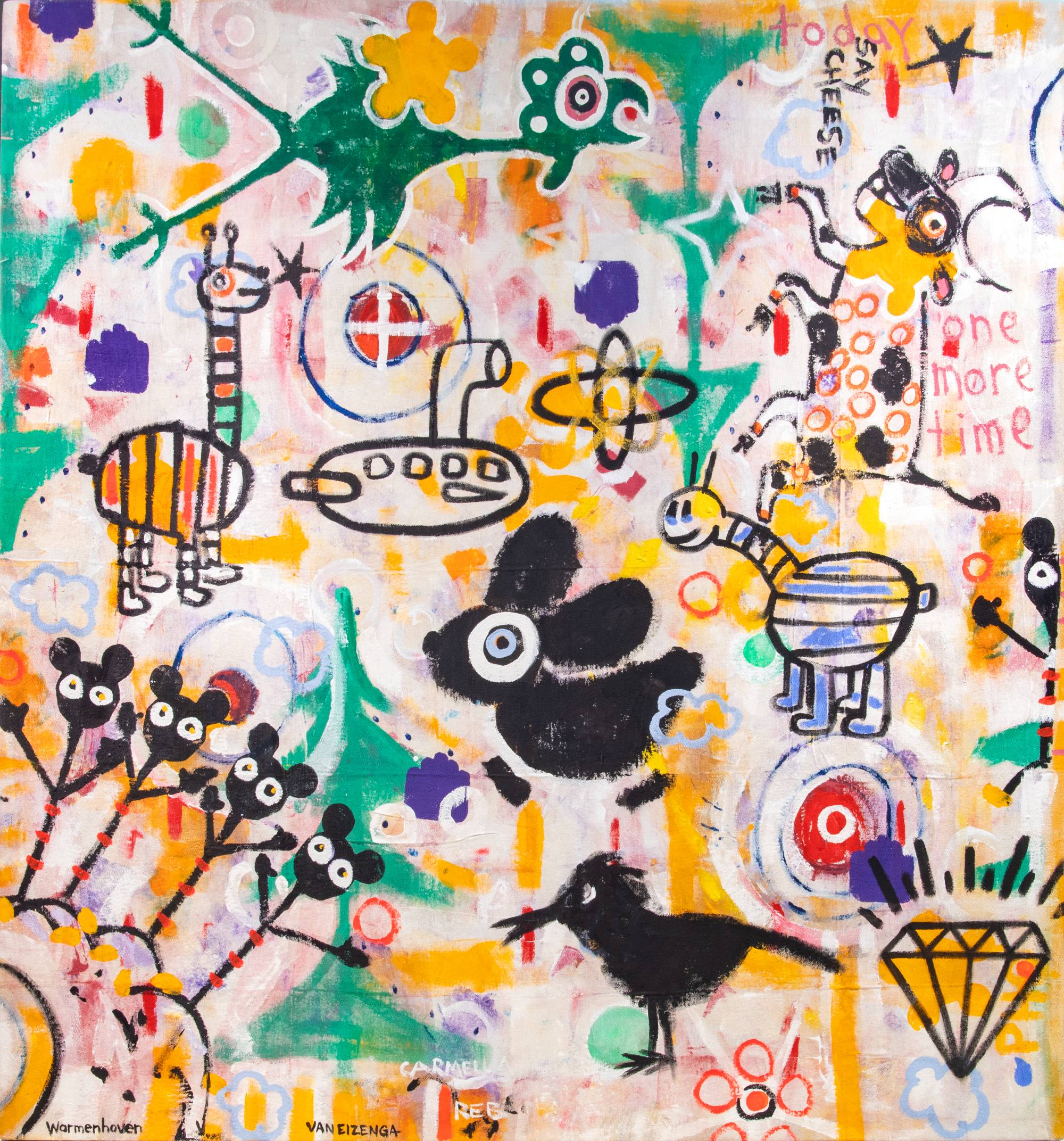
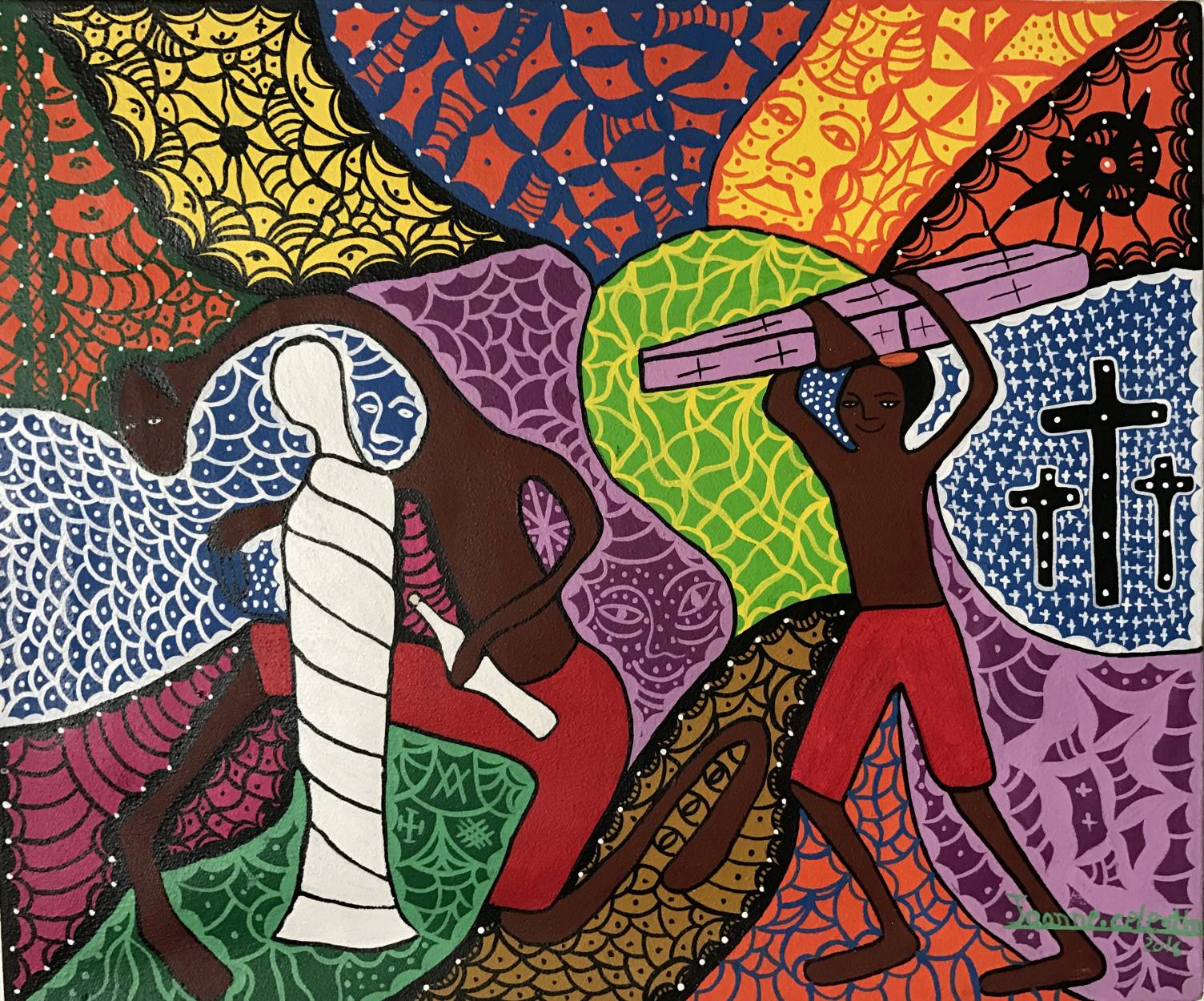
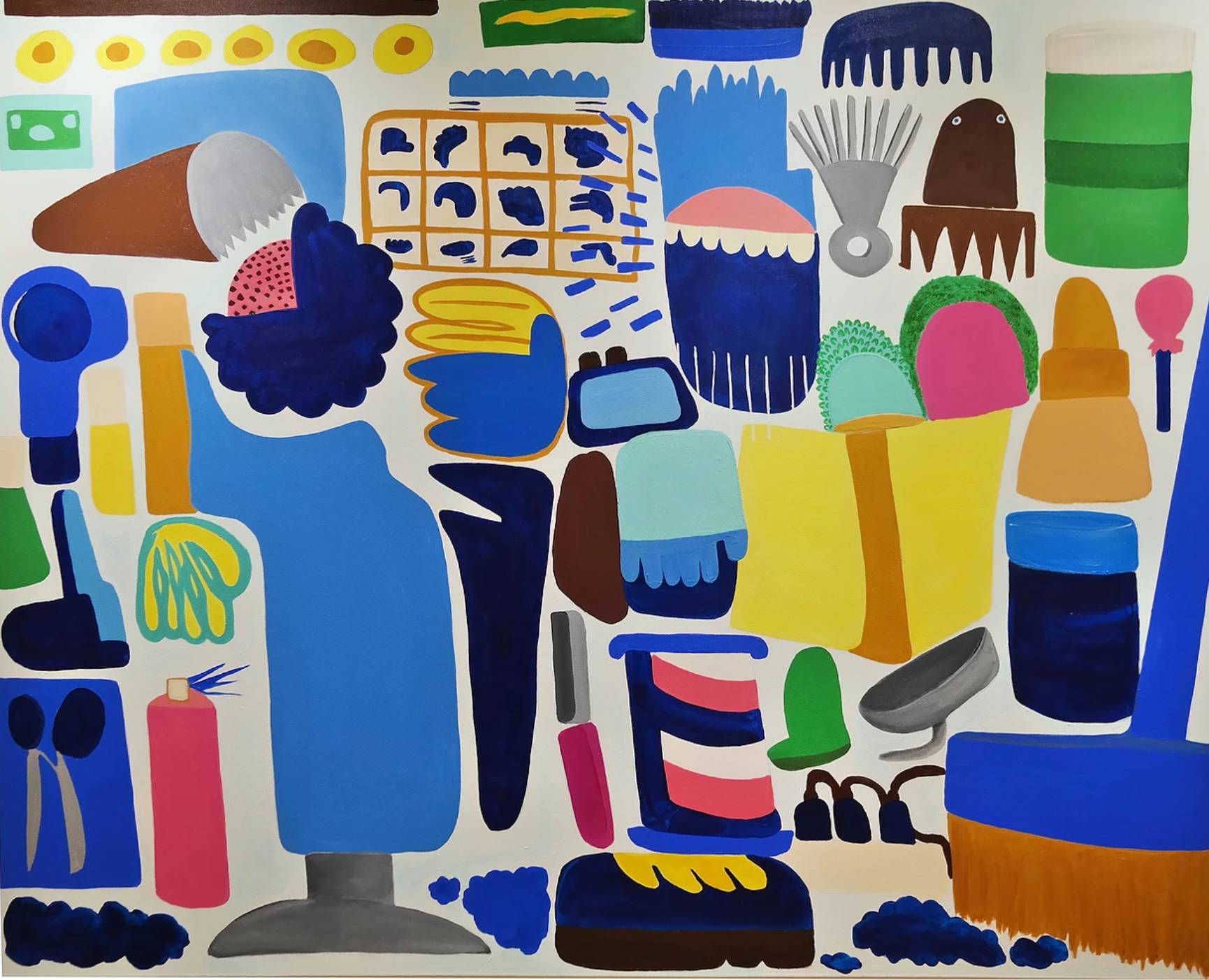
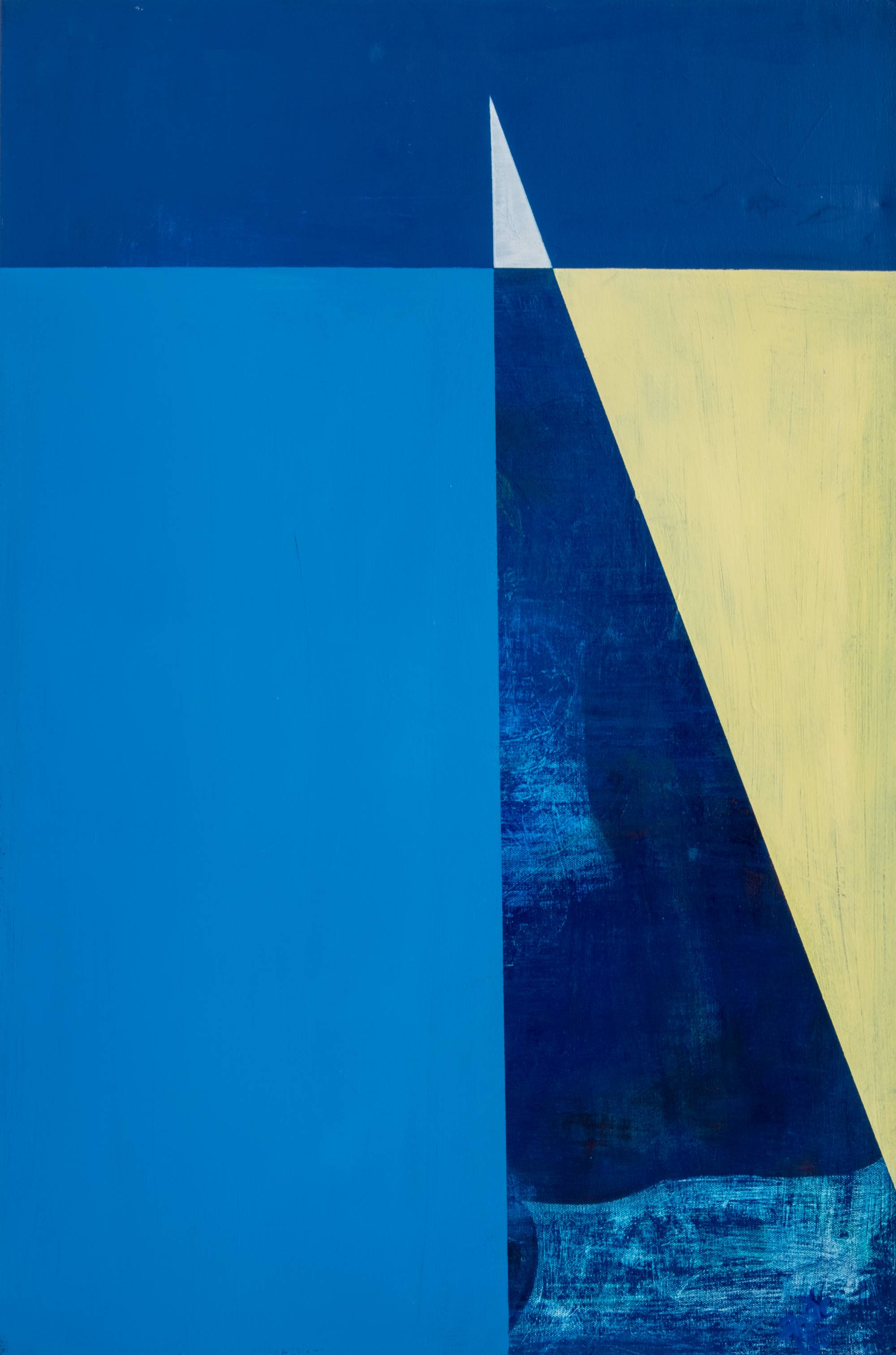
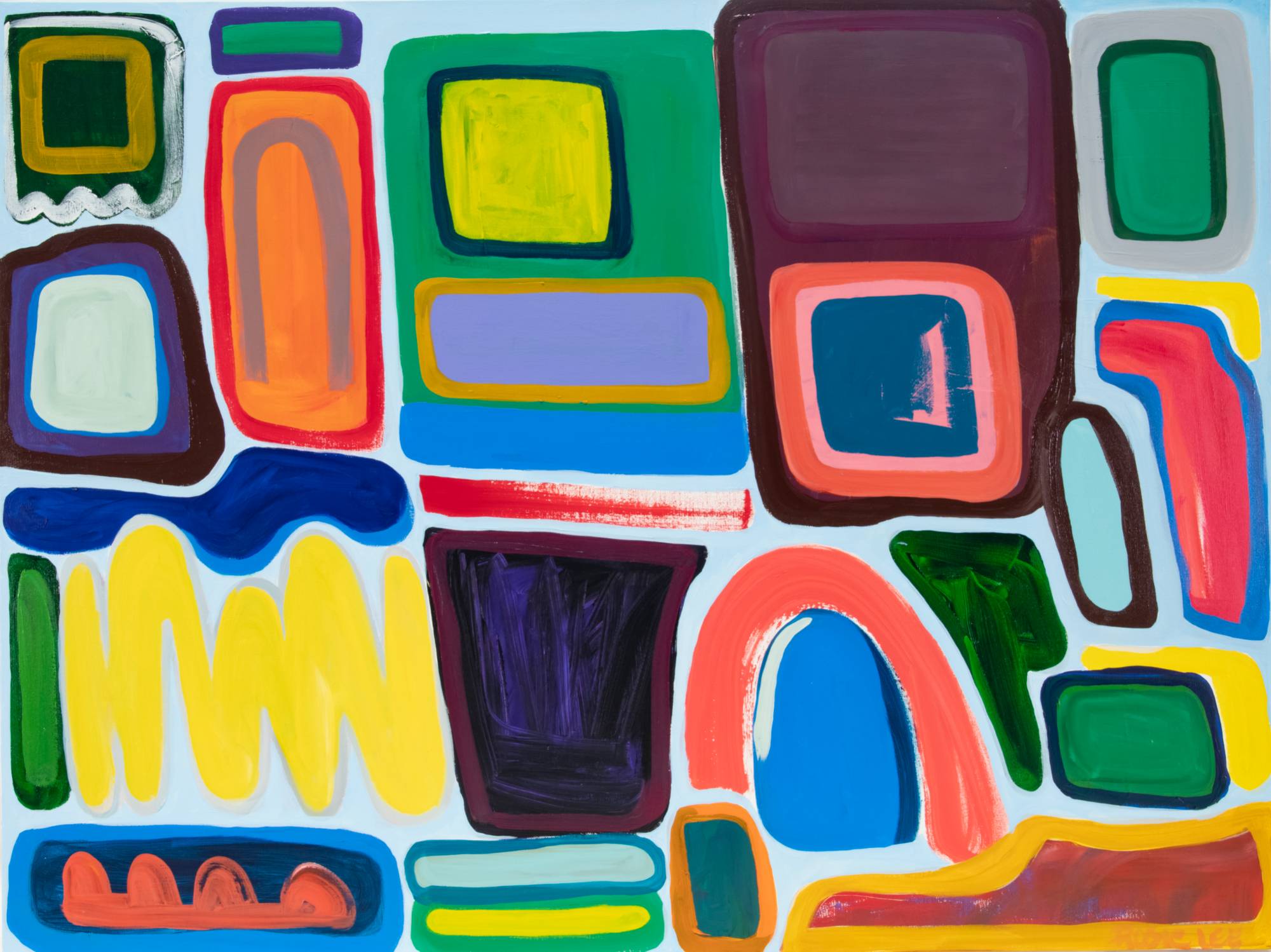
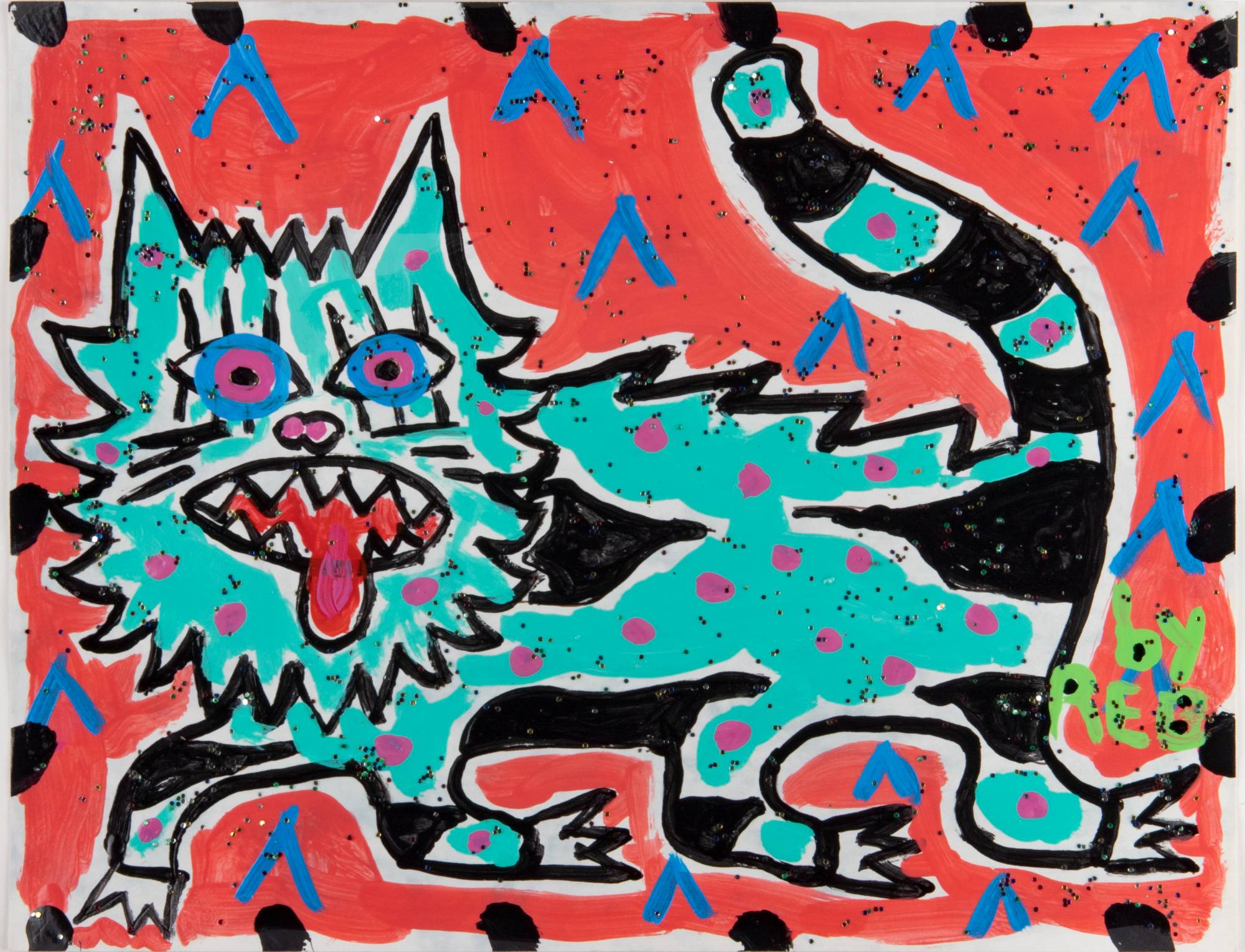
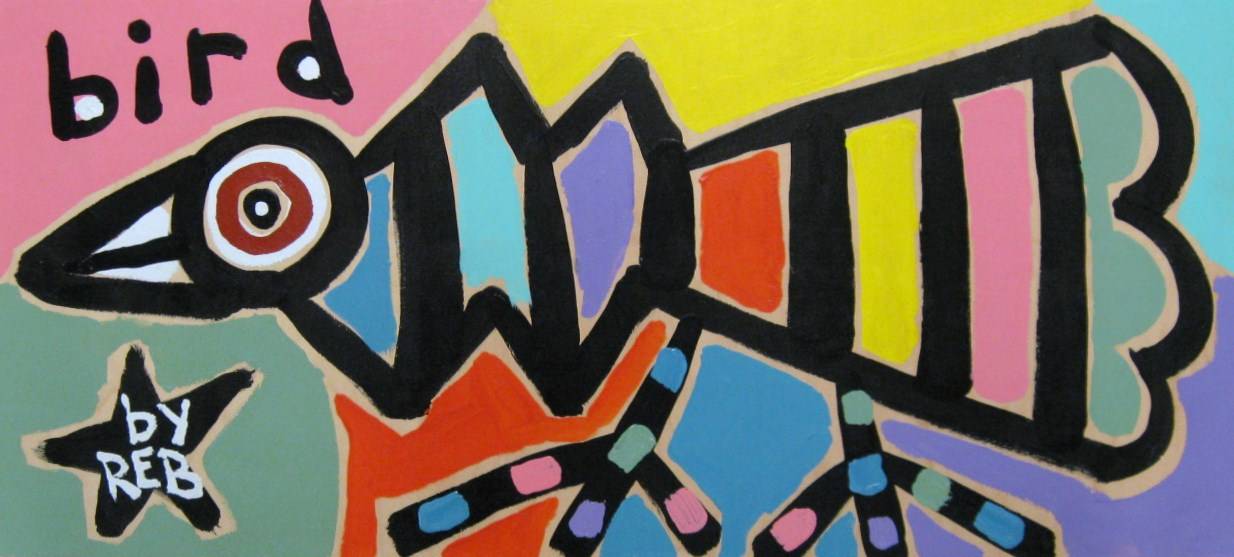
[1659470004].jpg)
